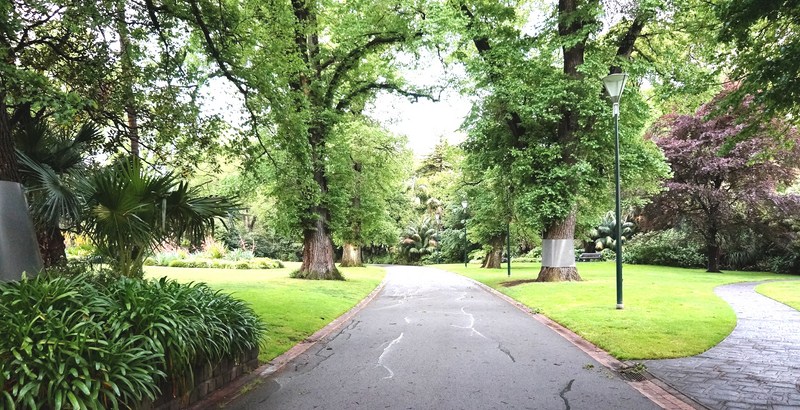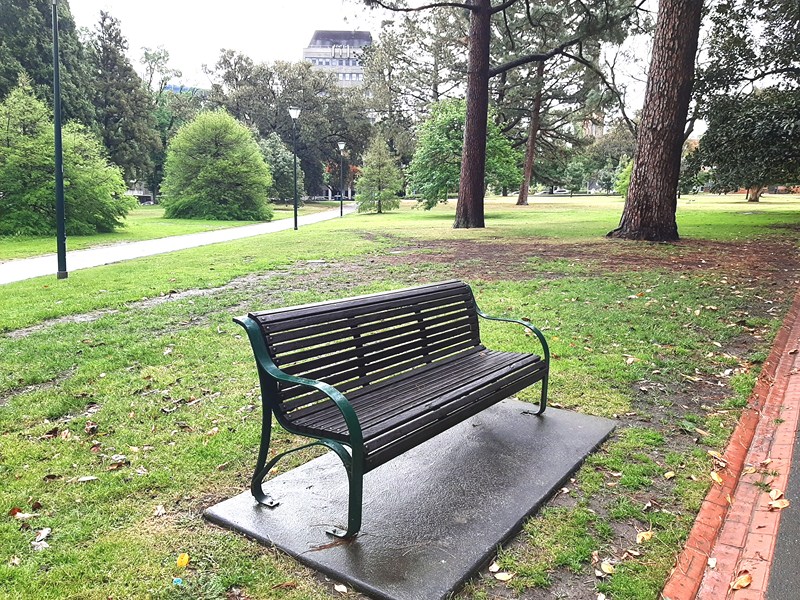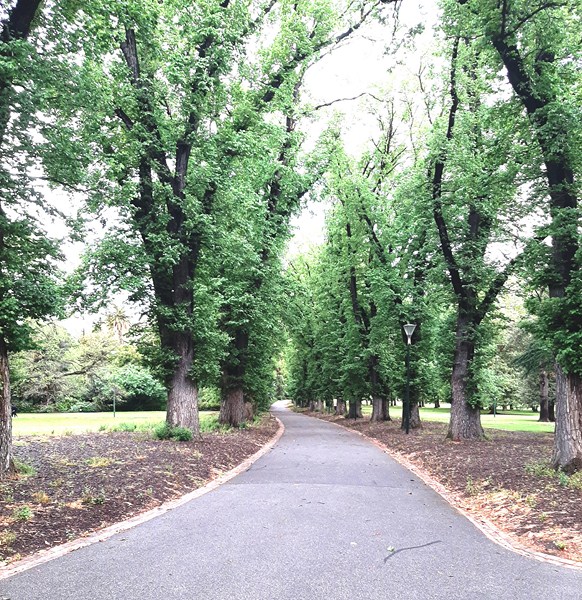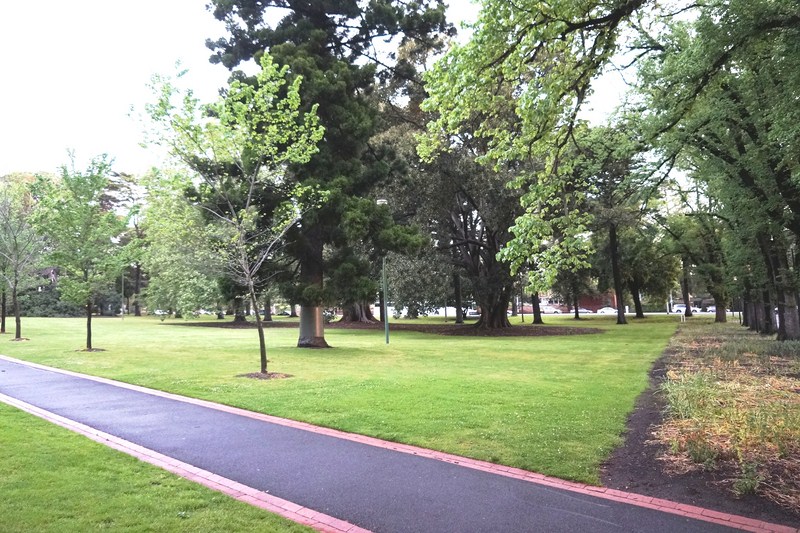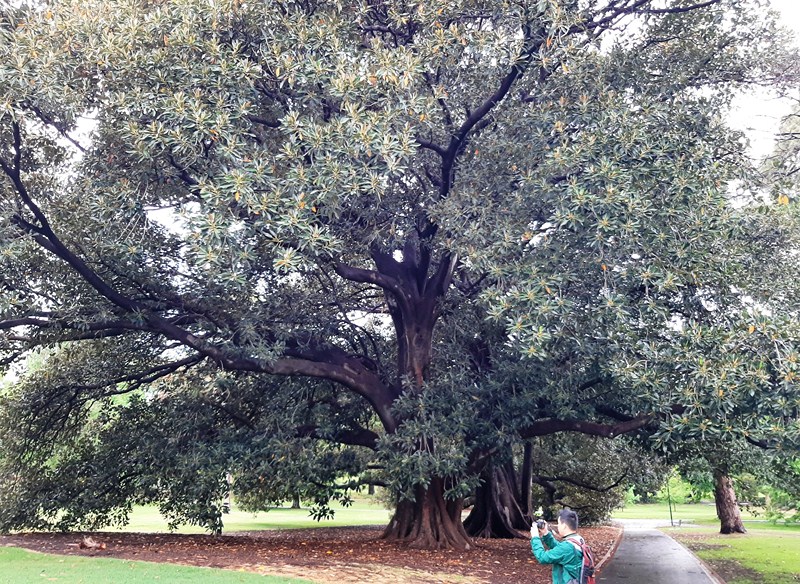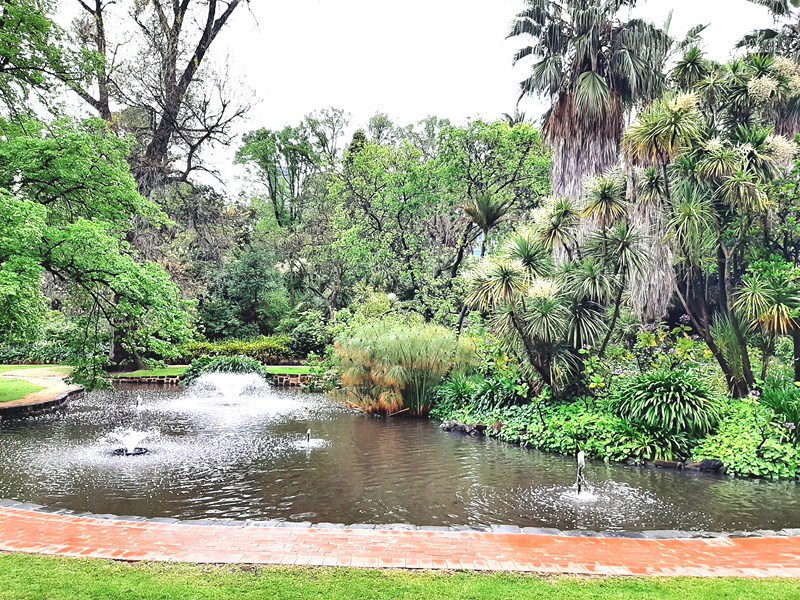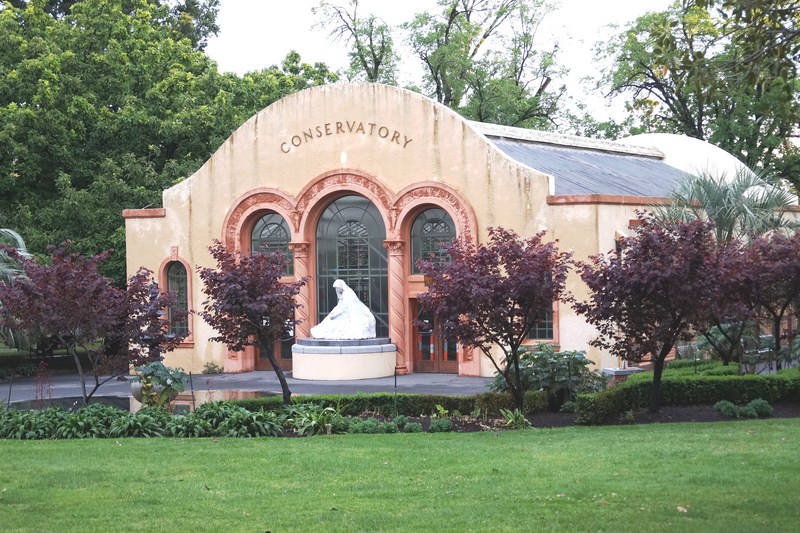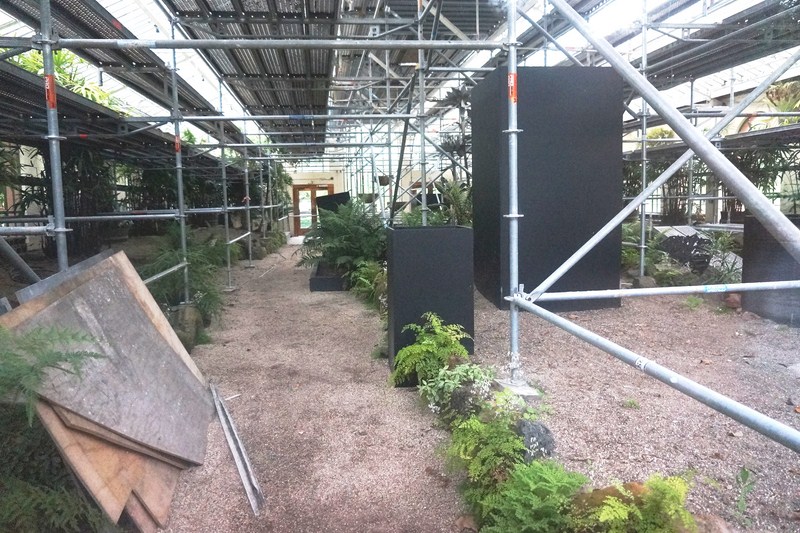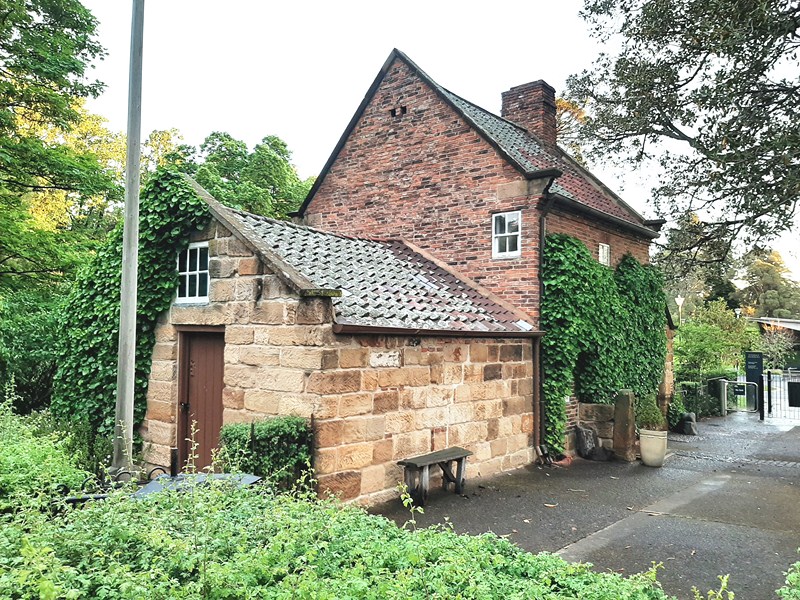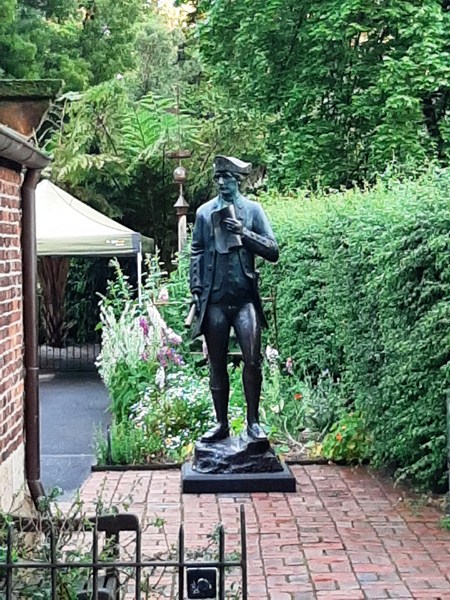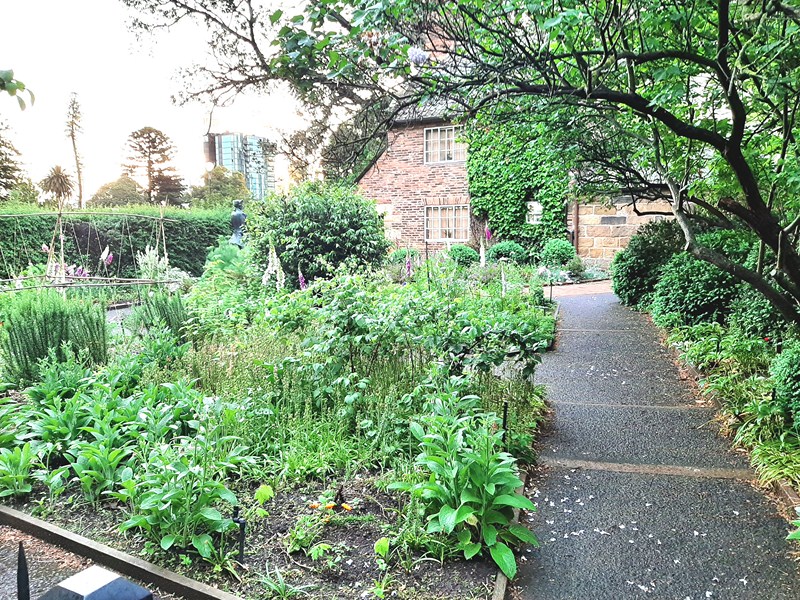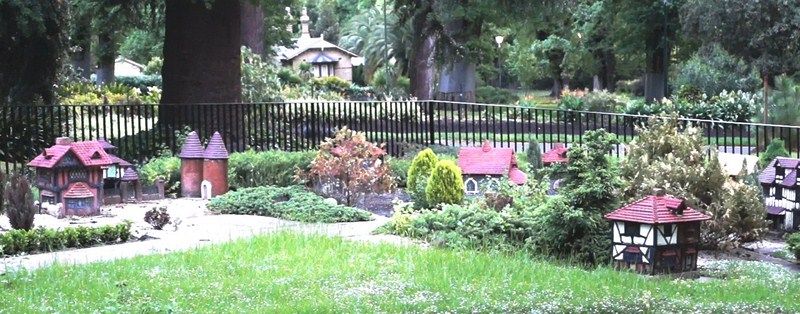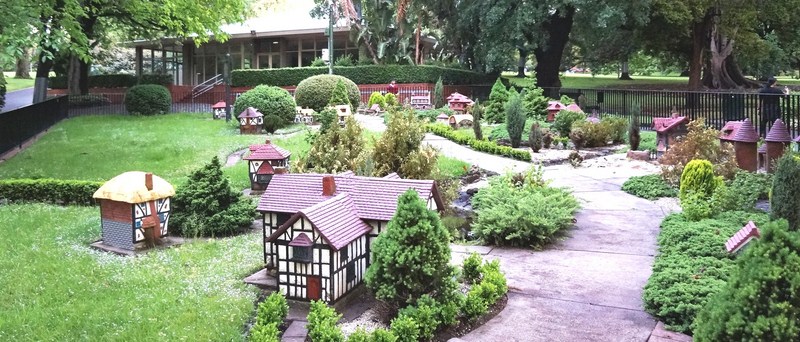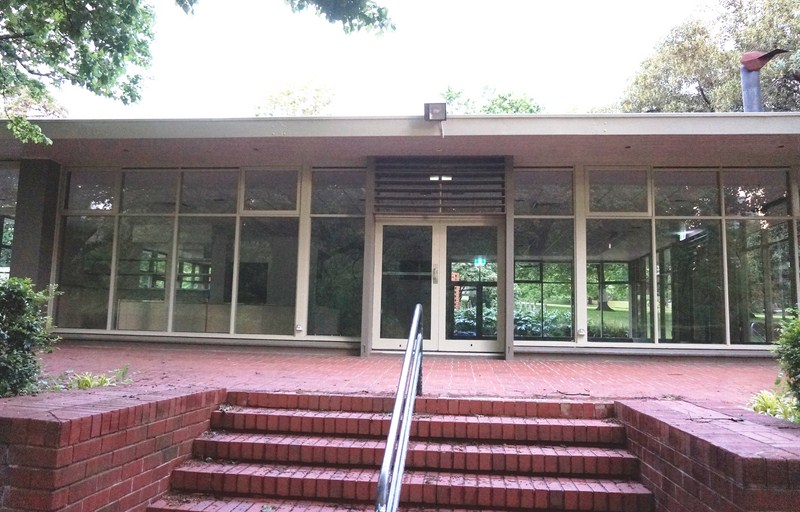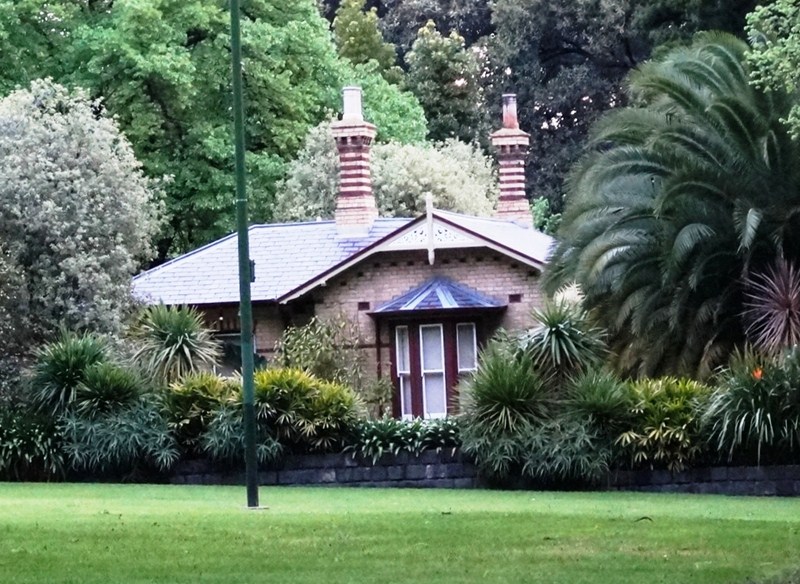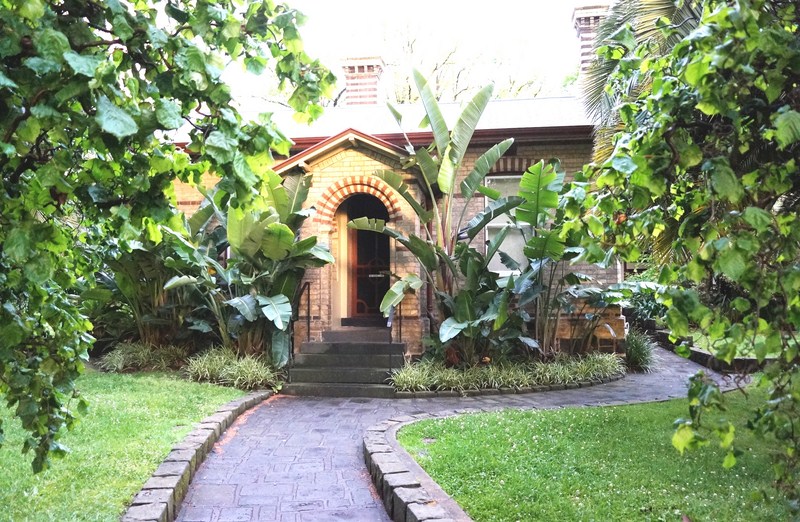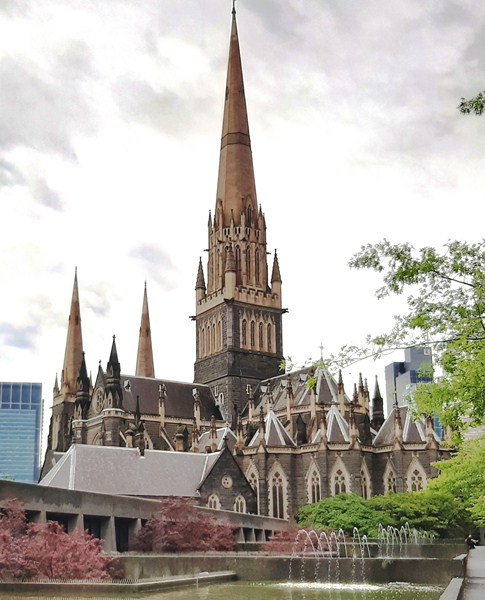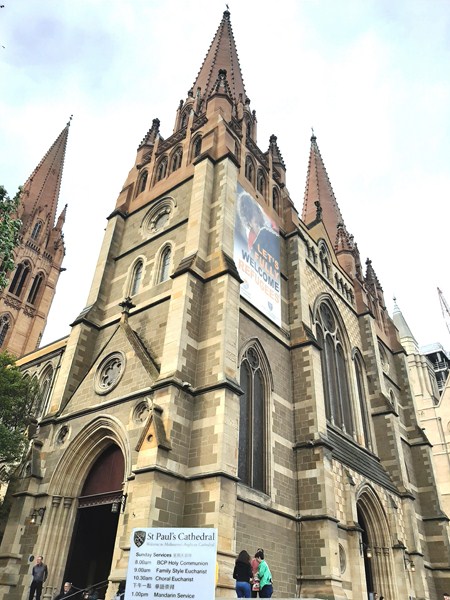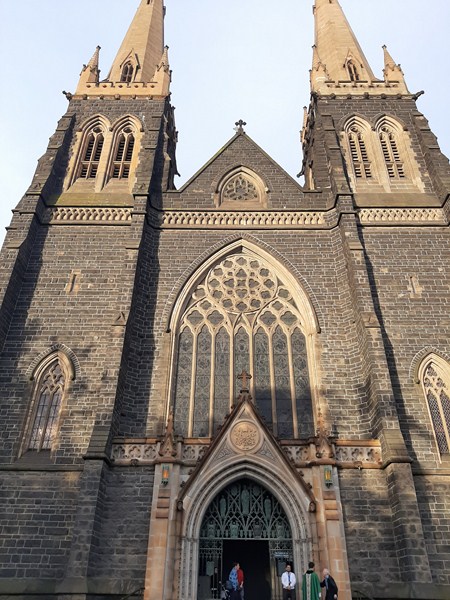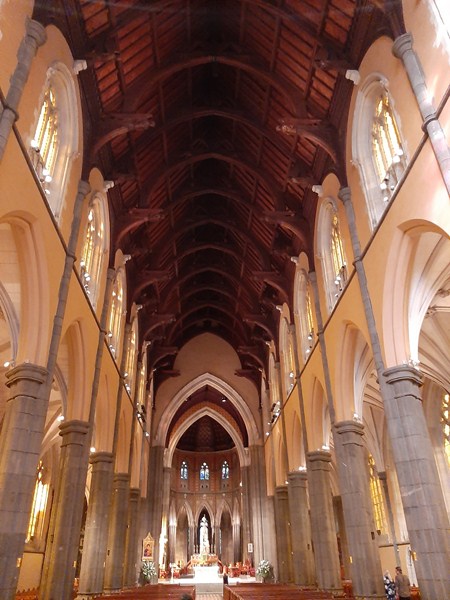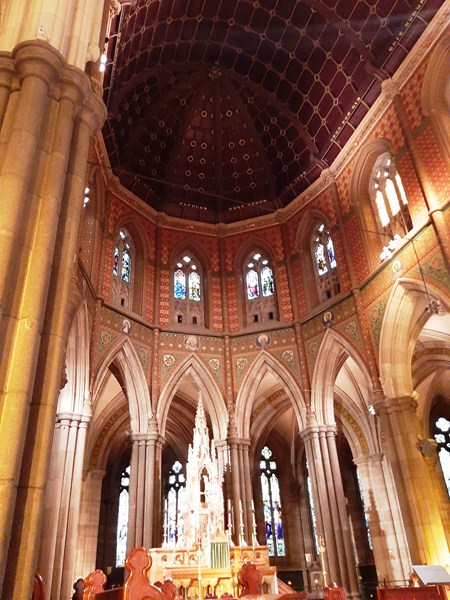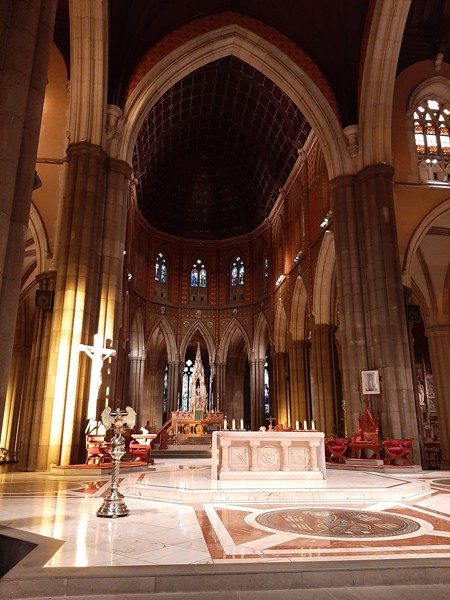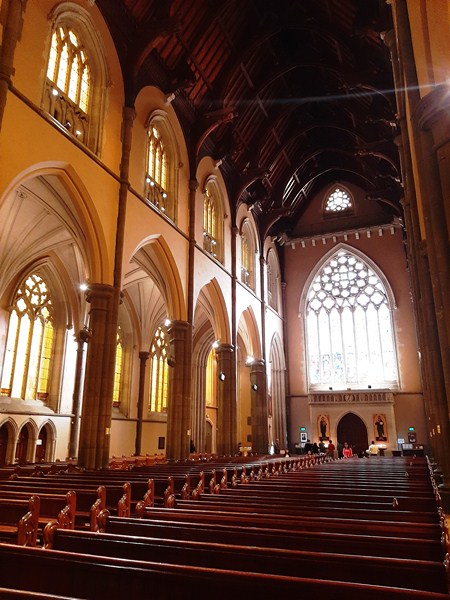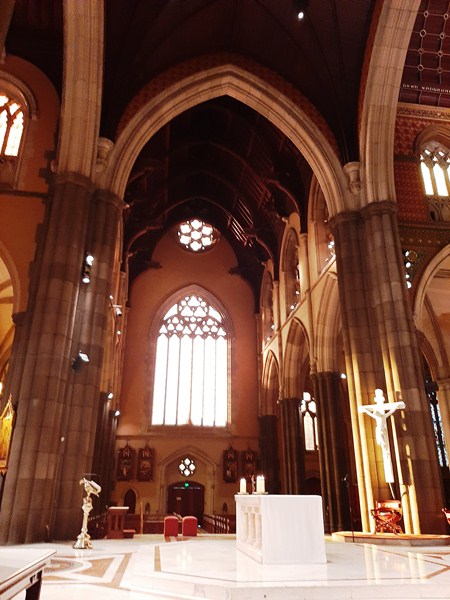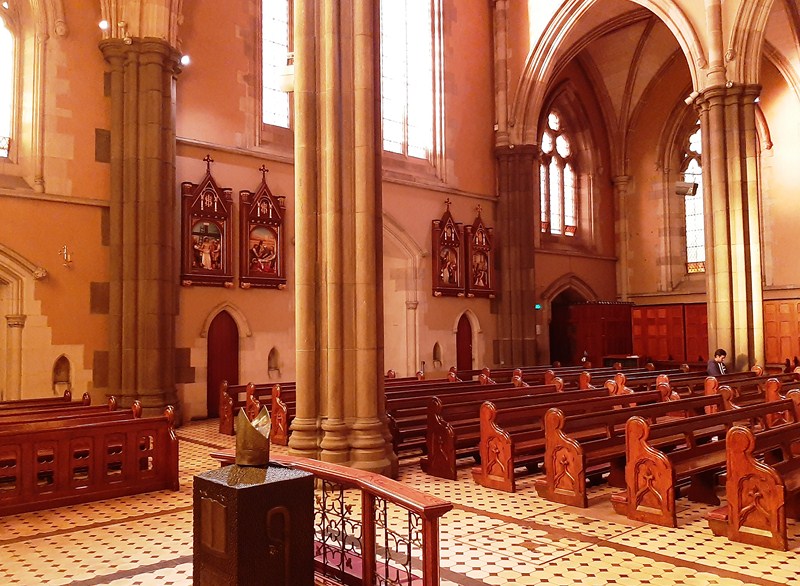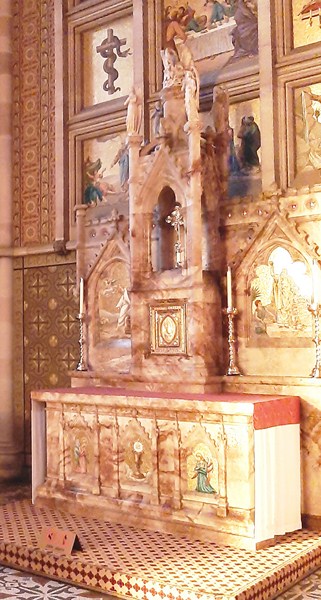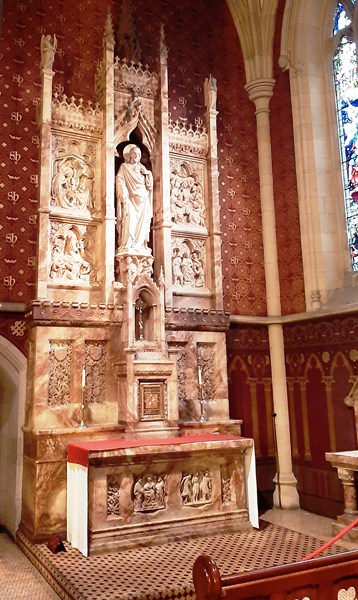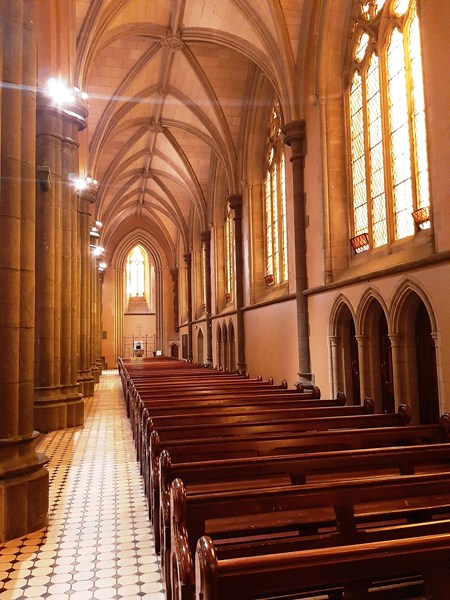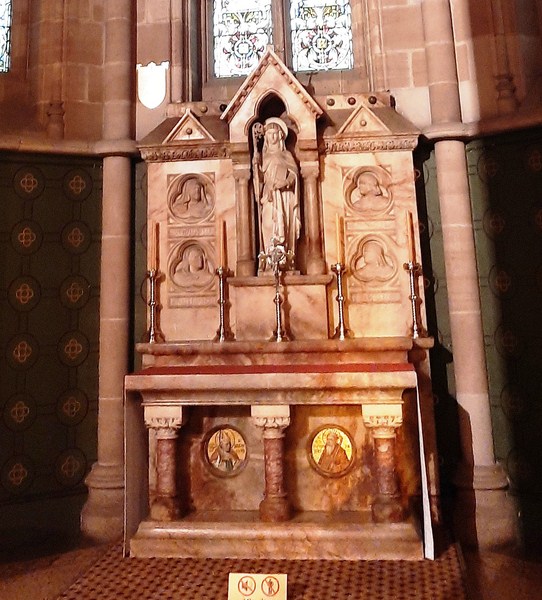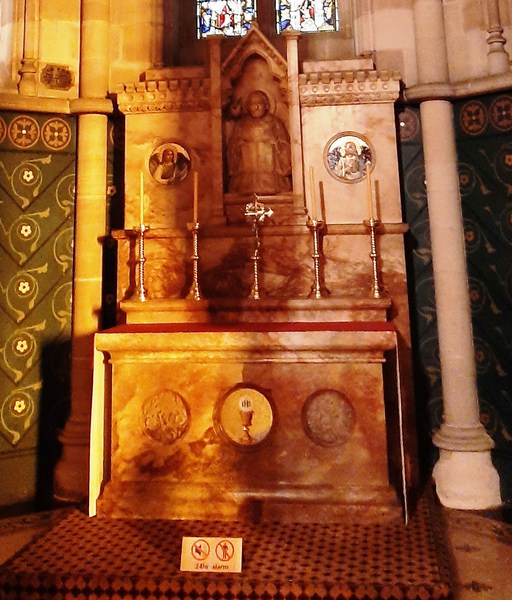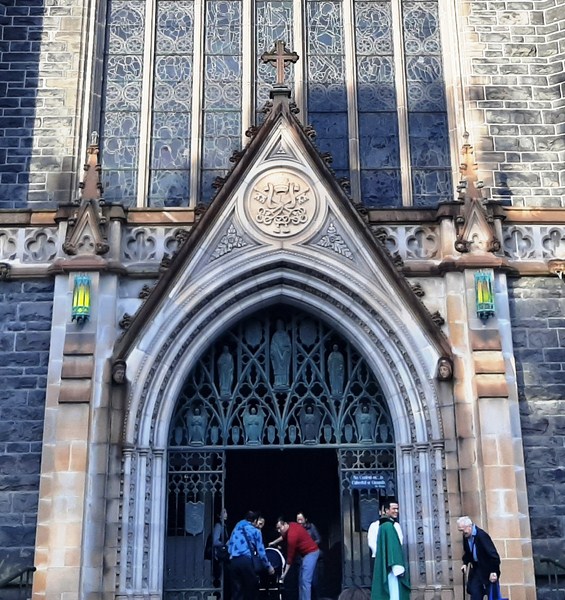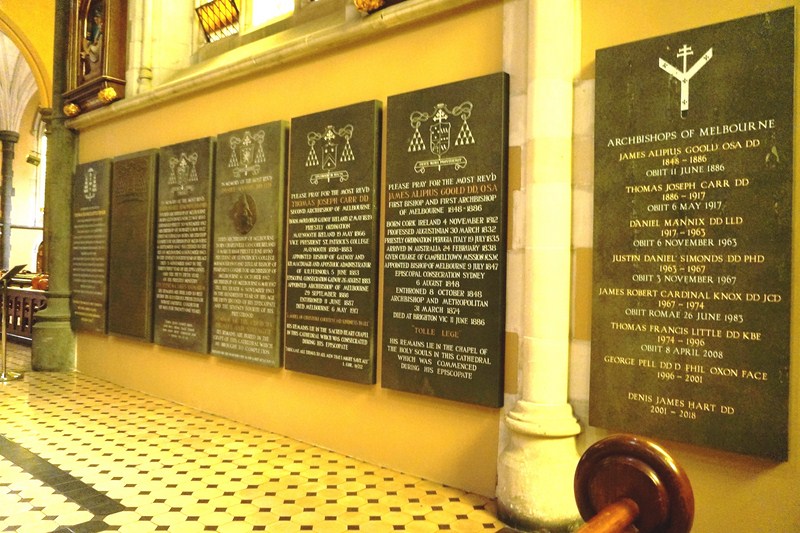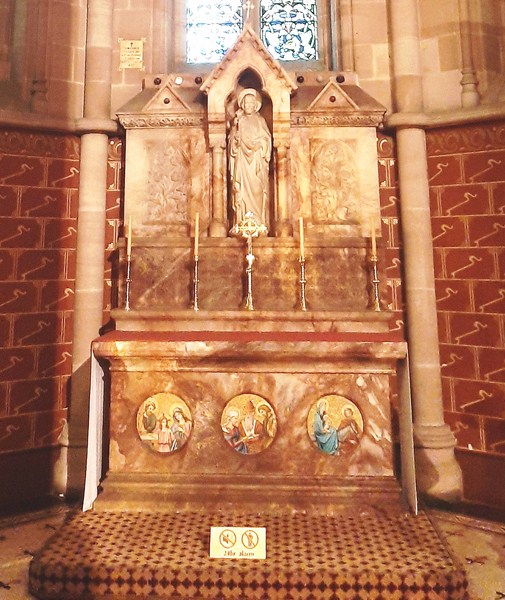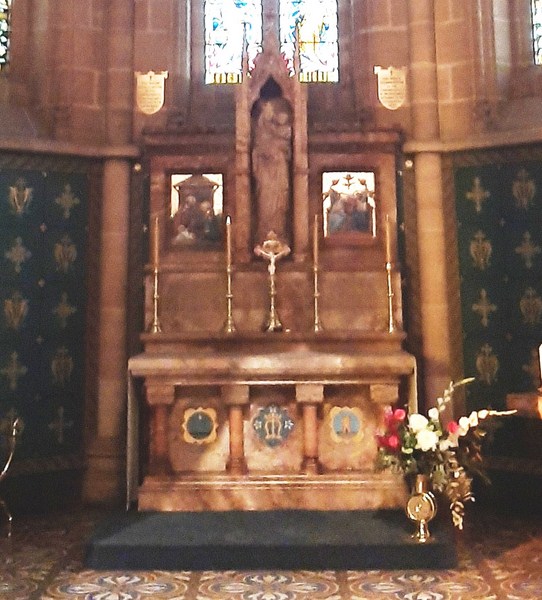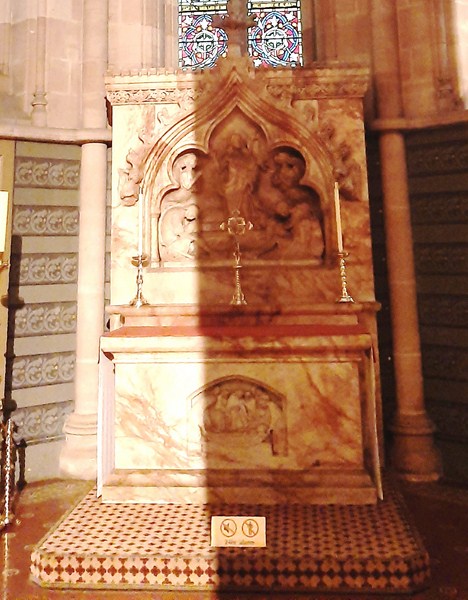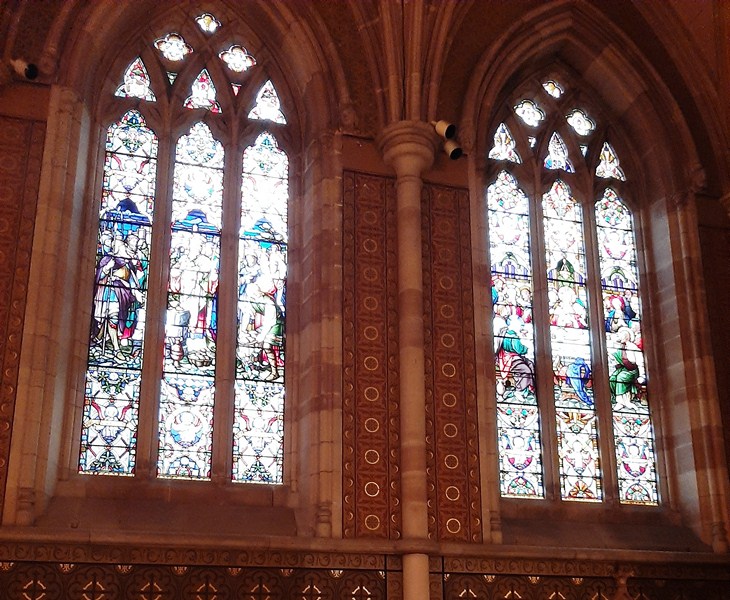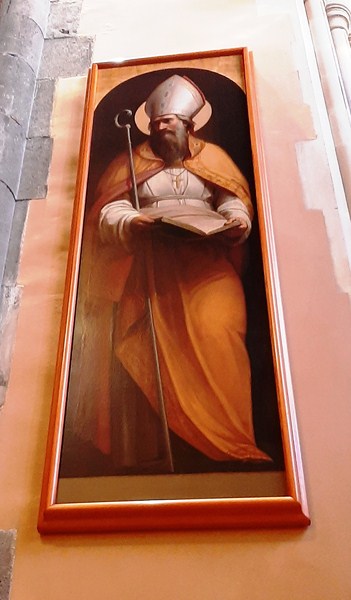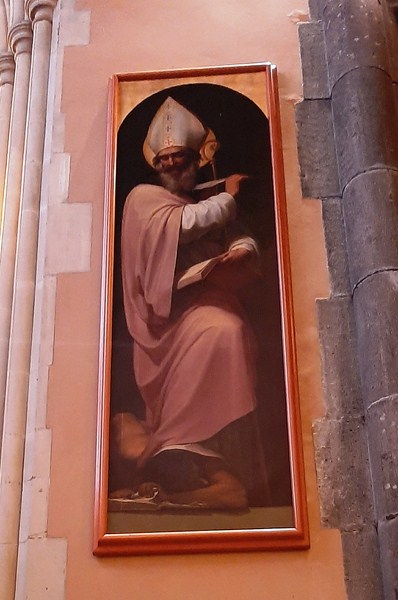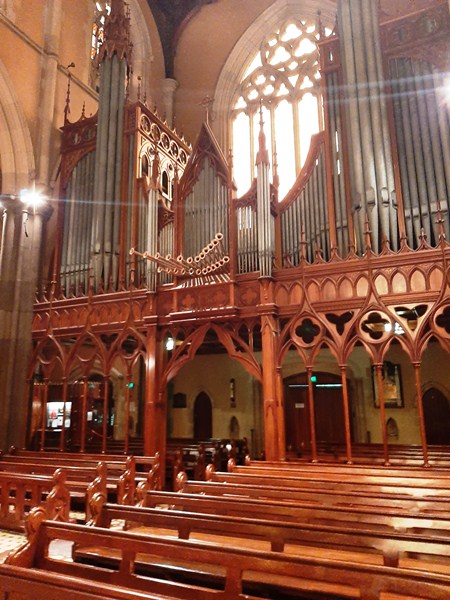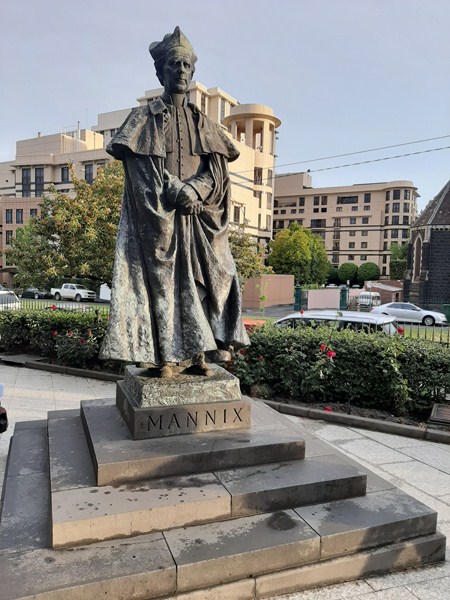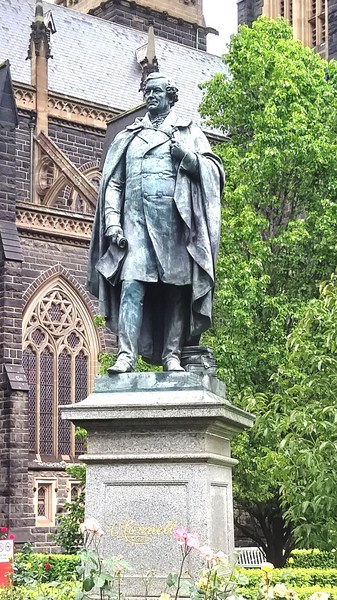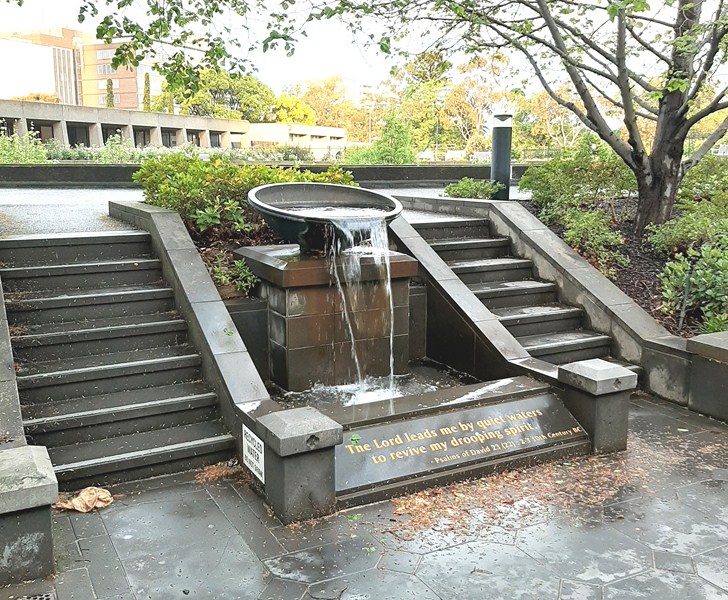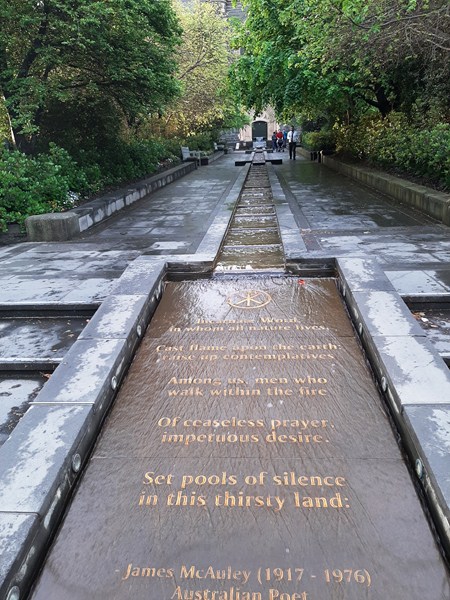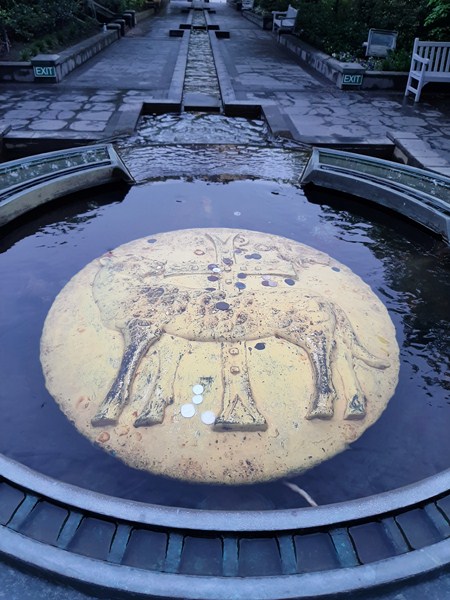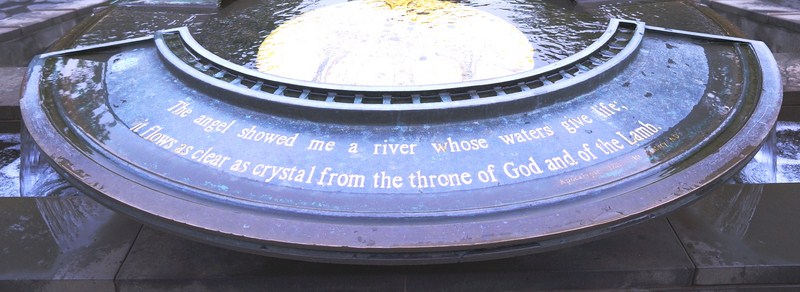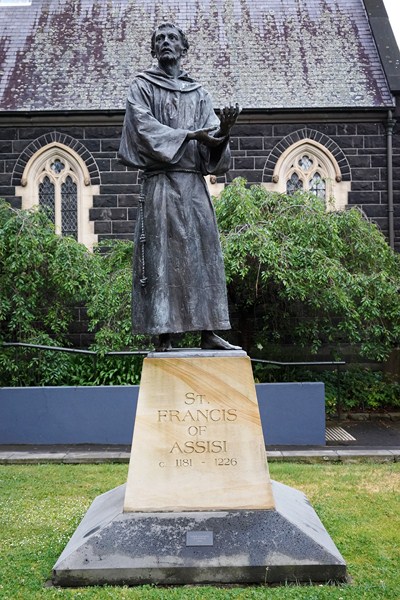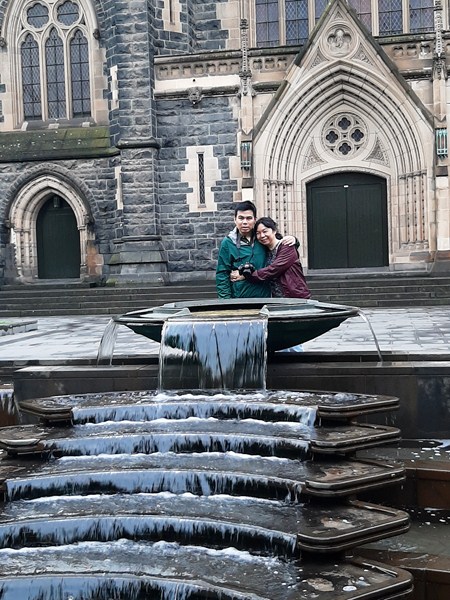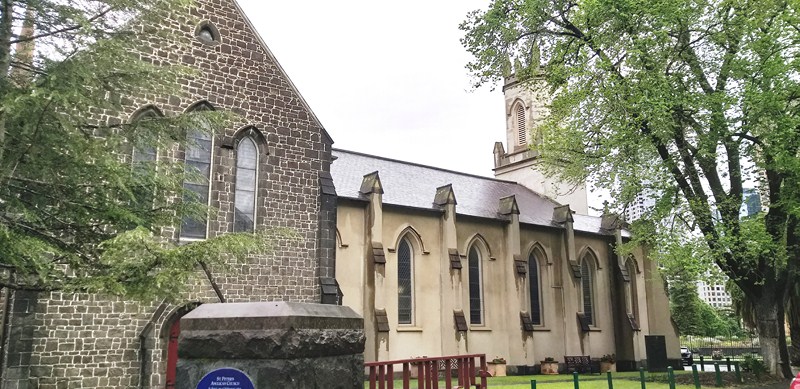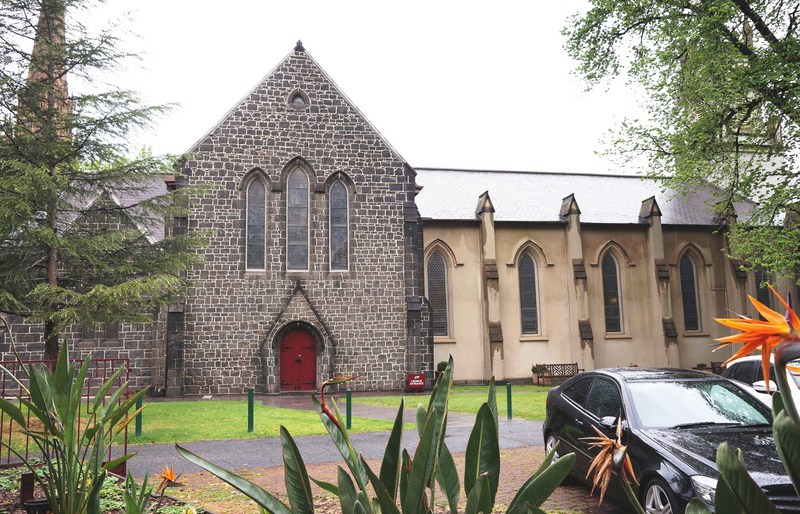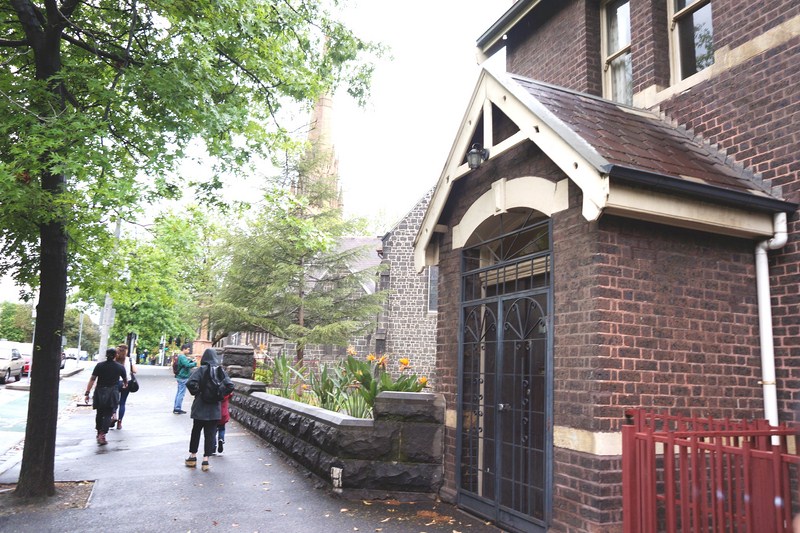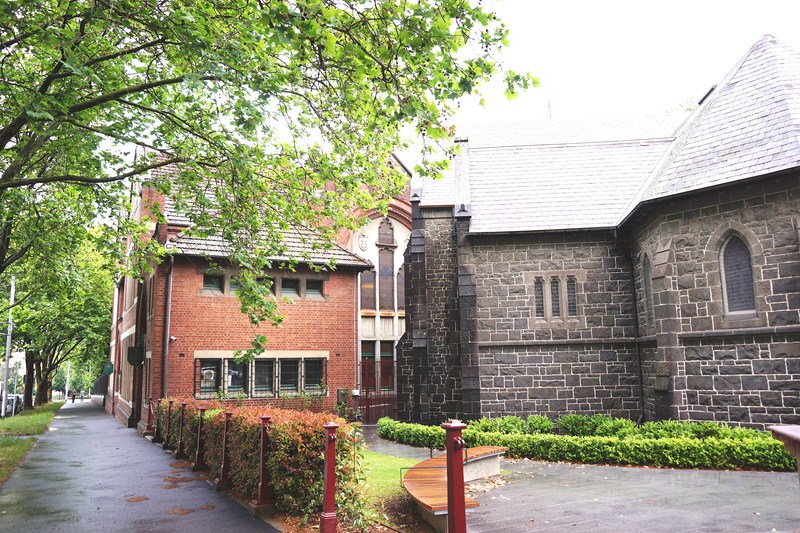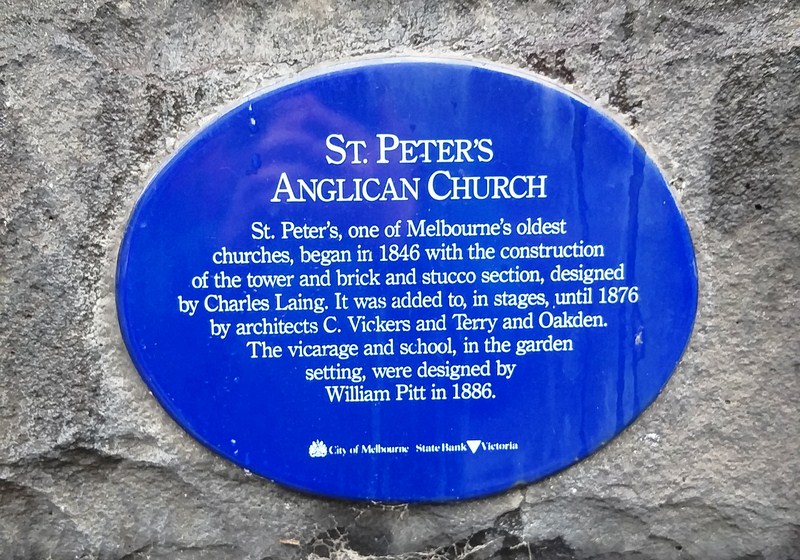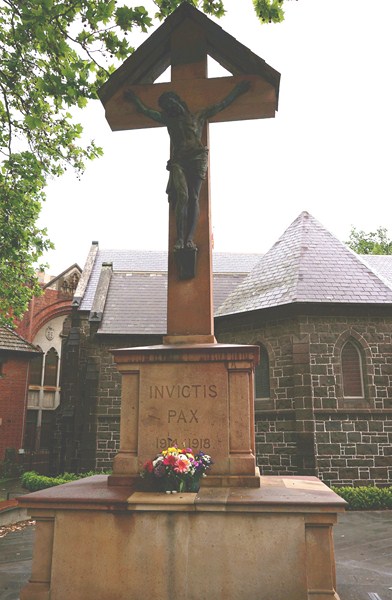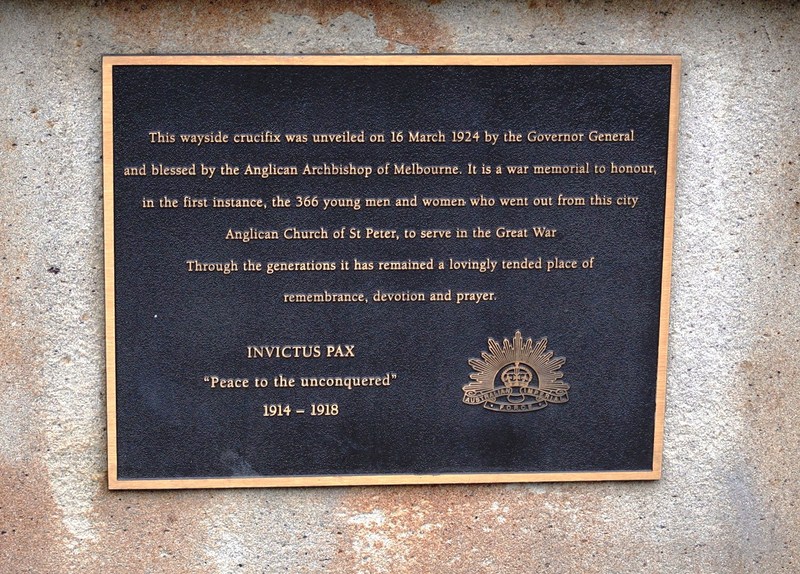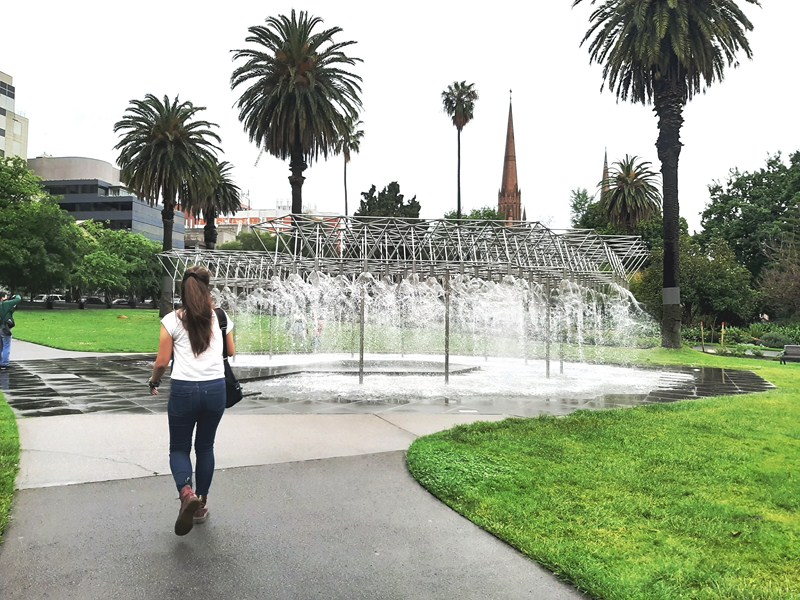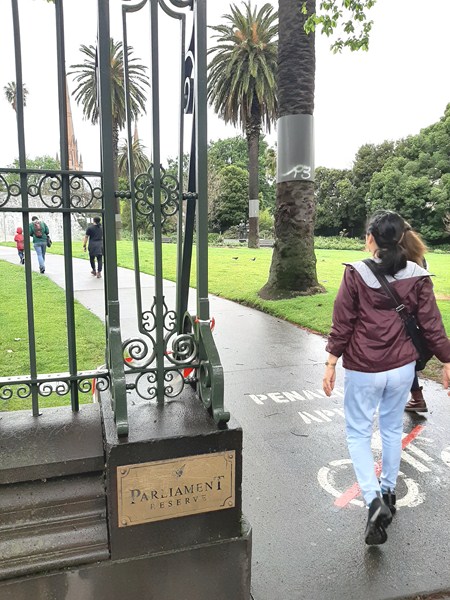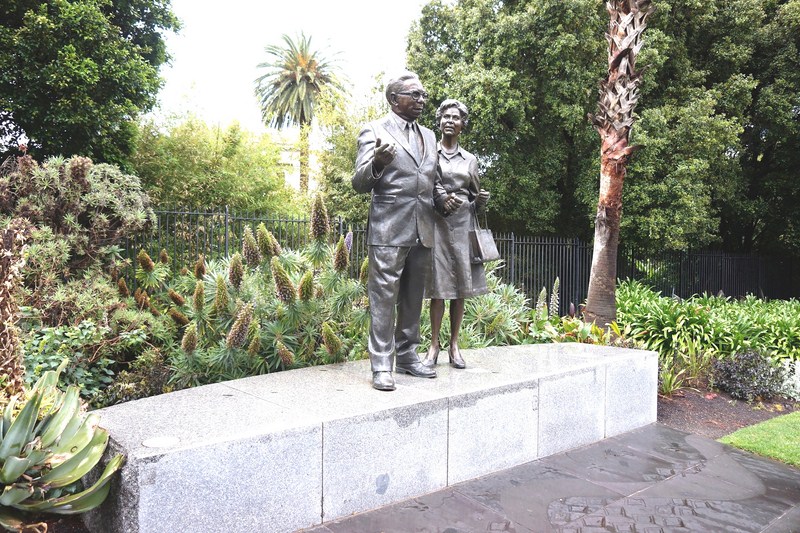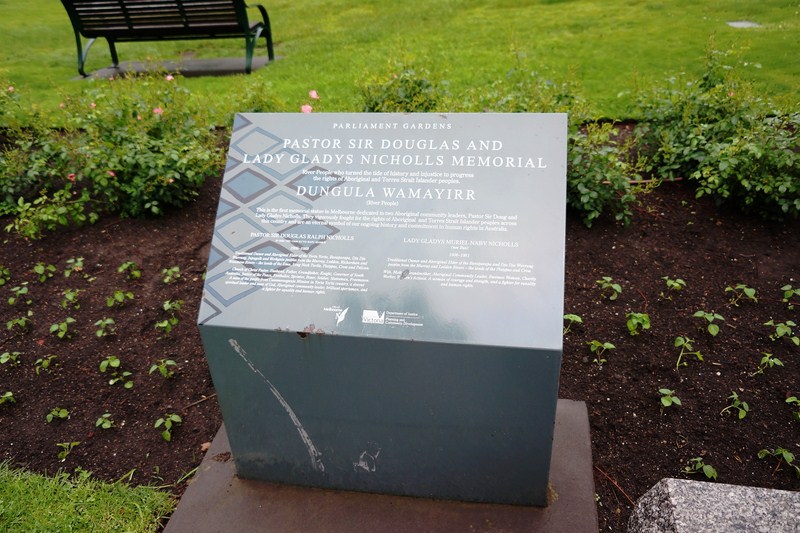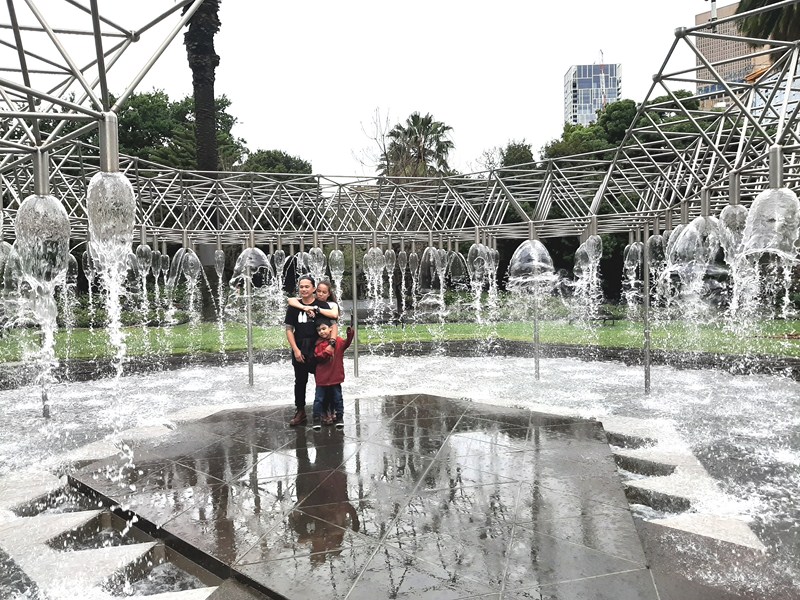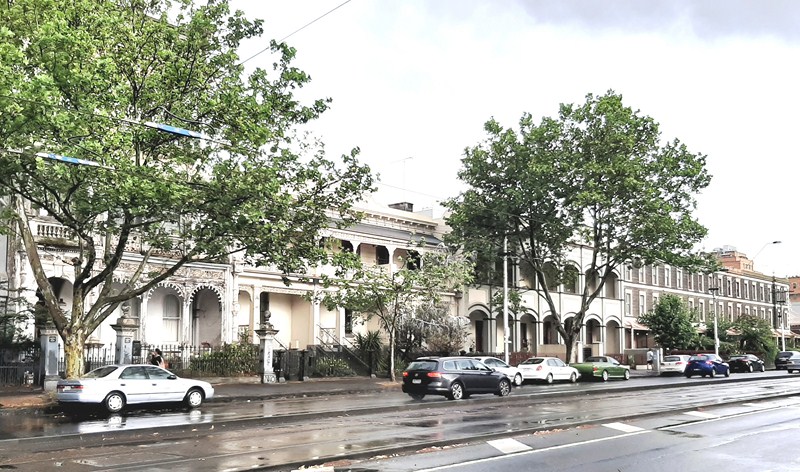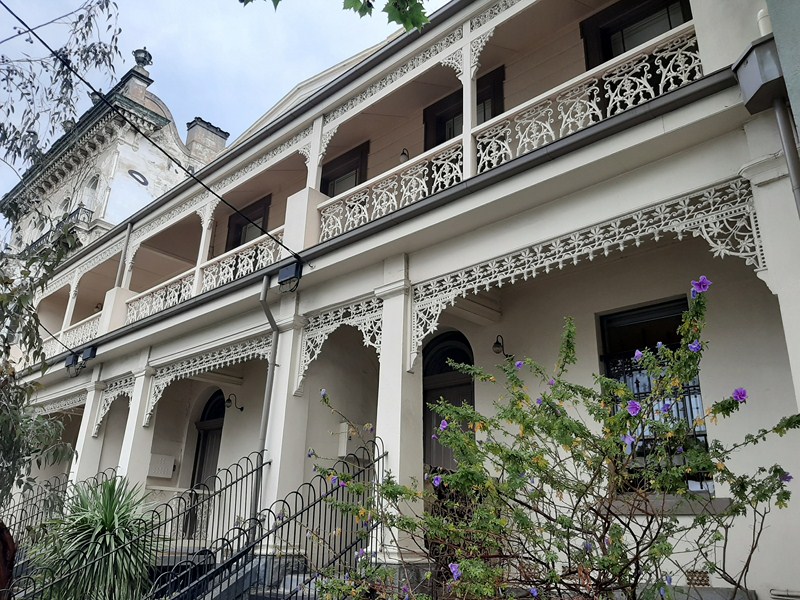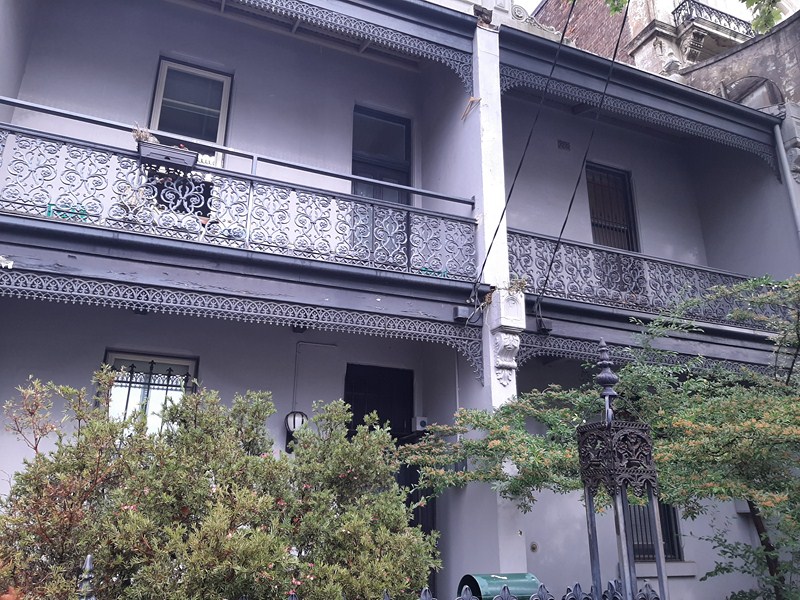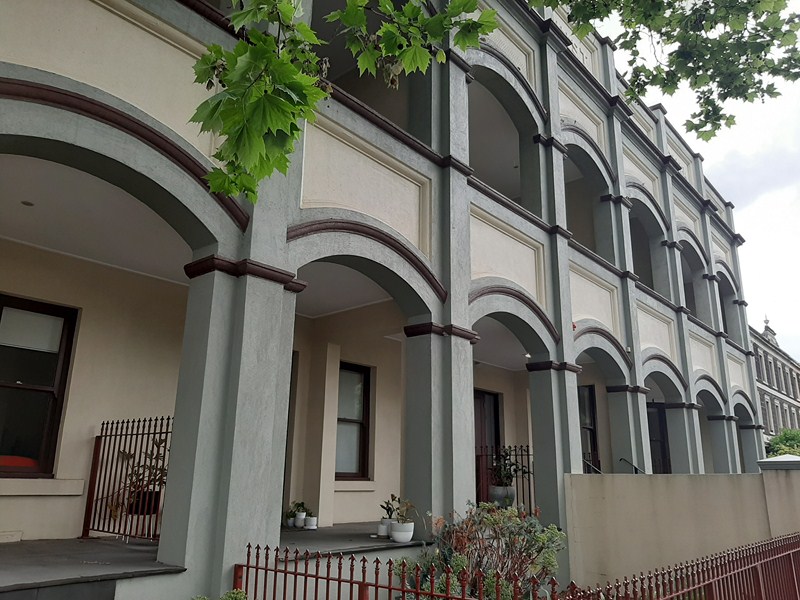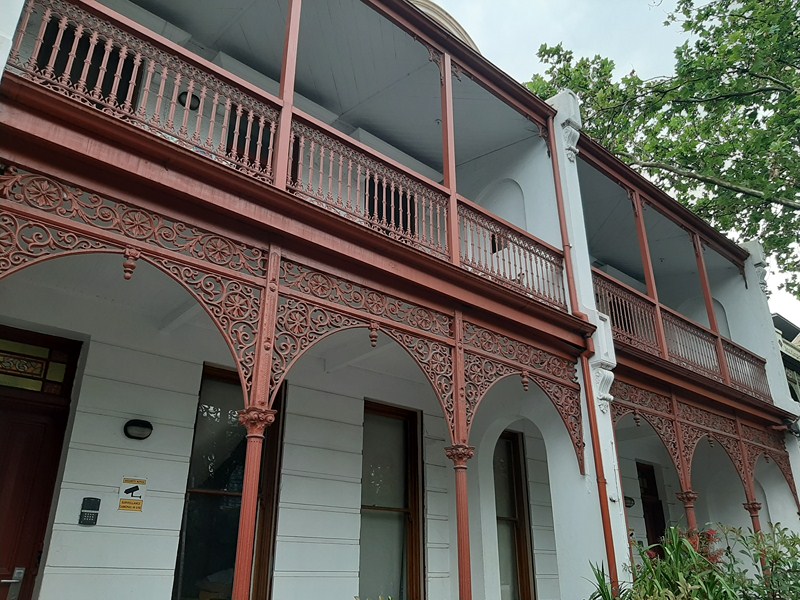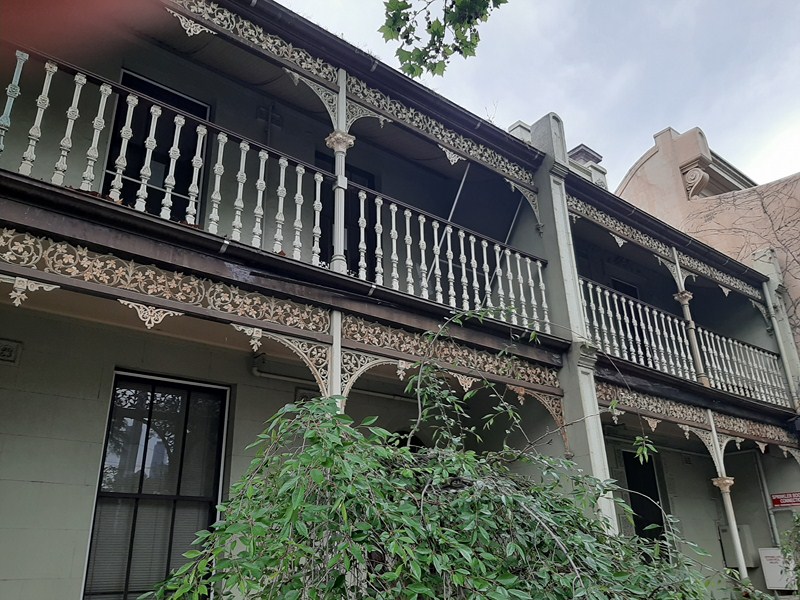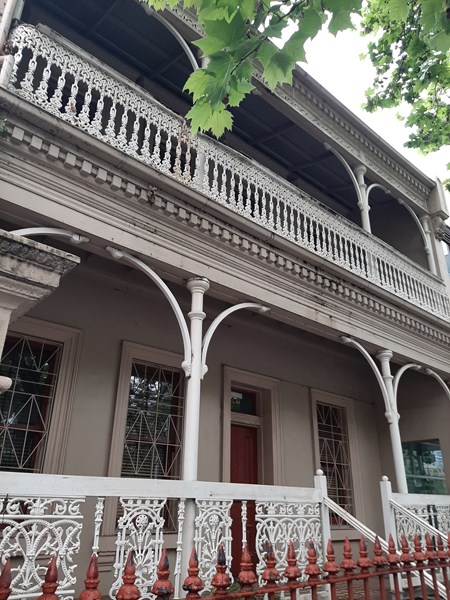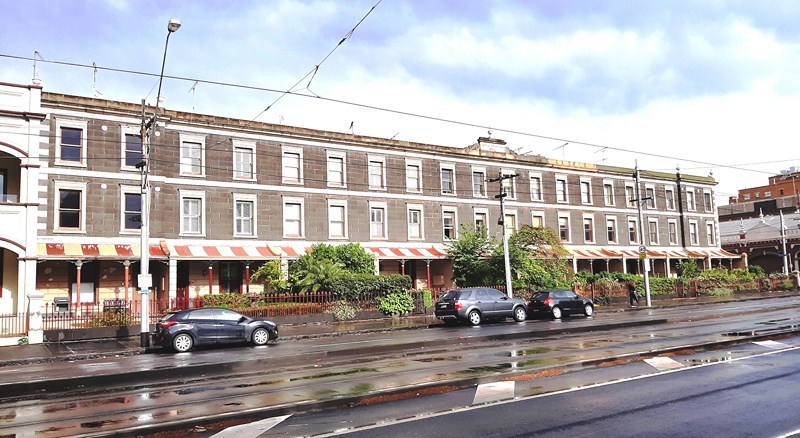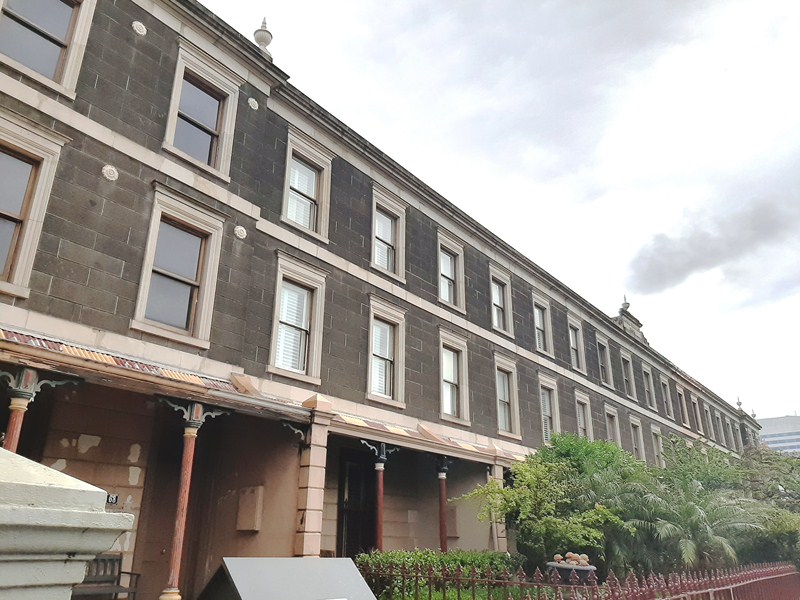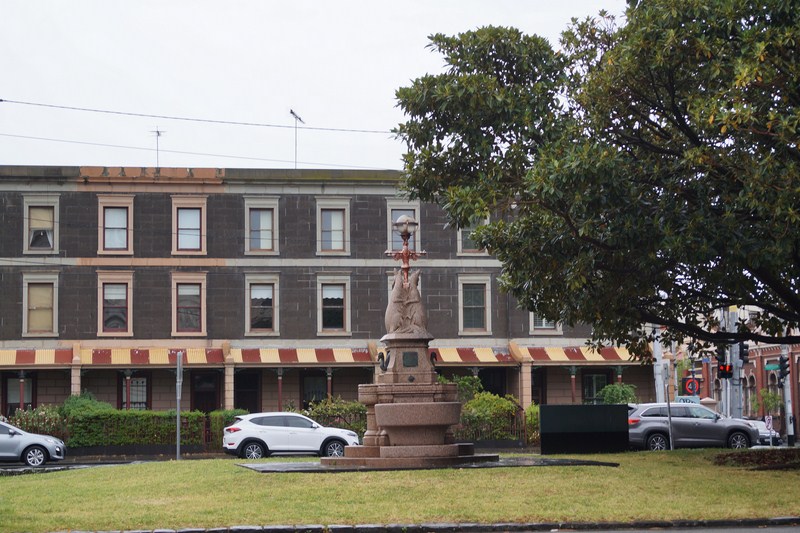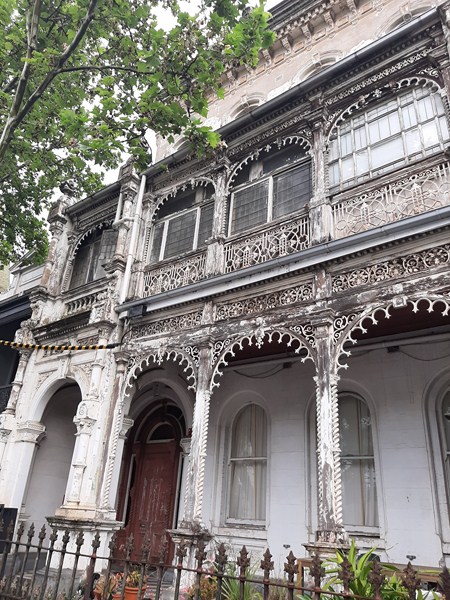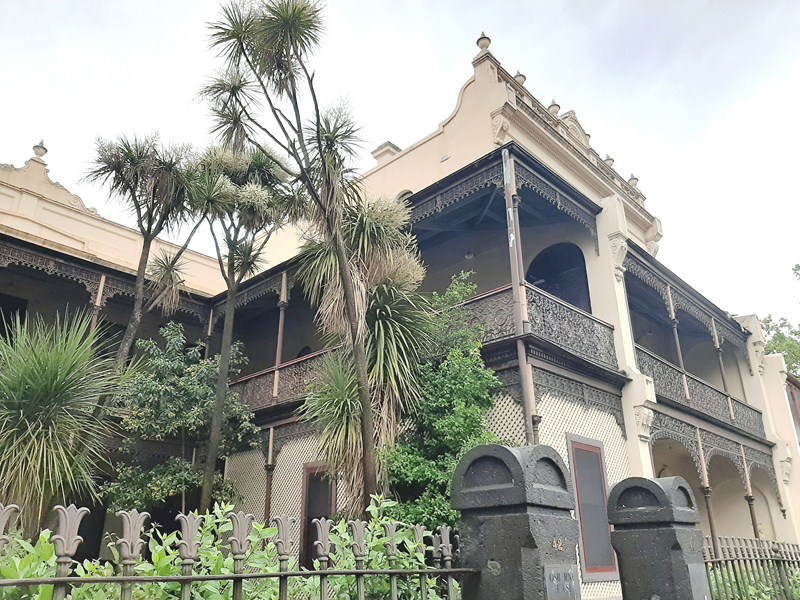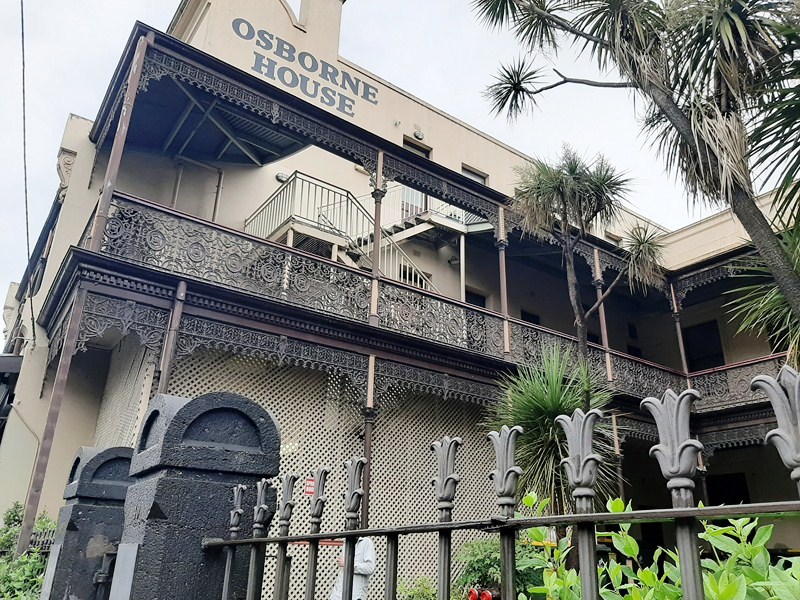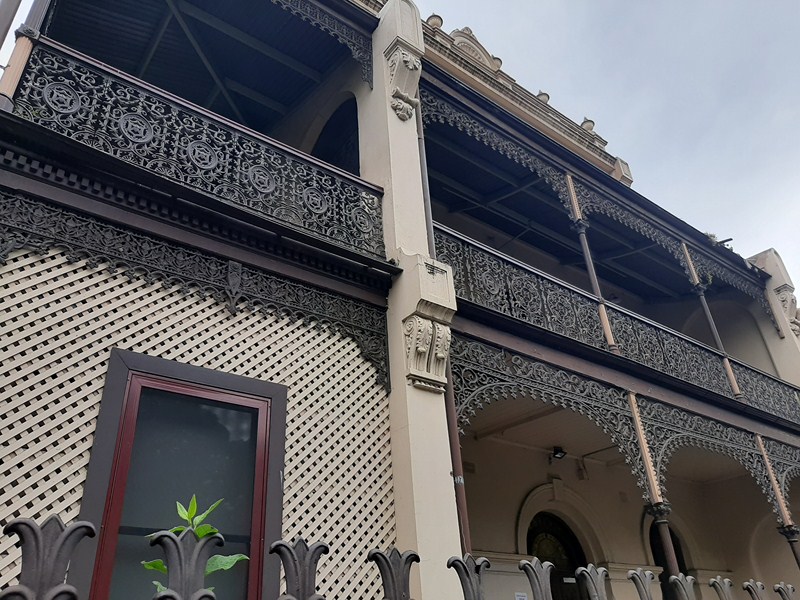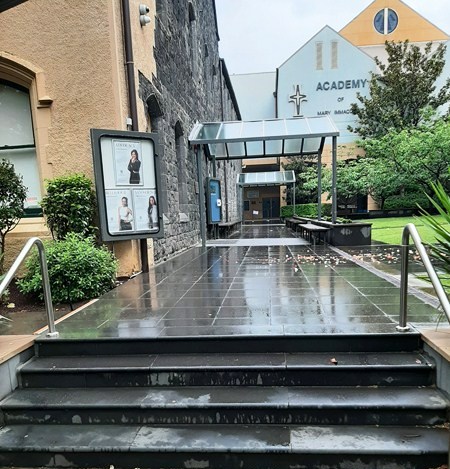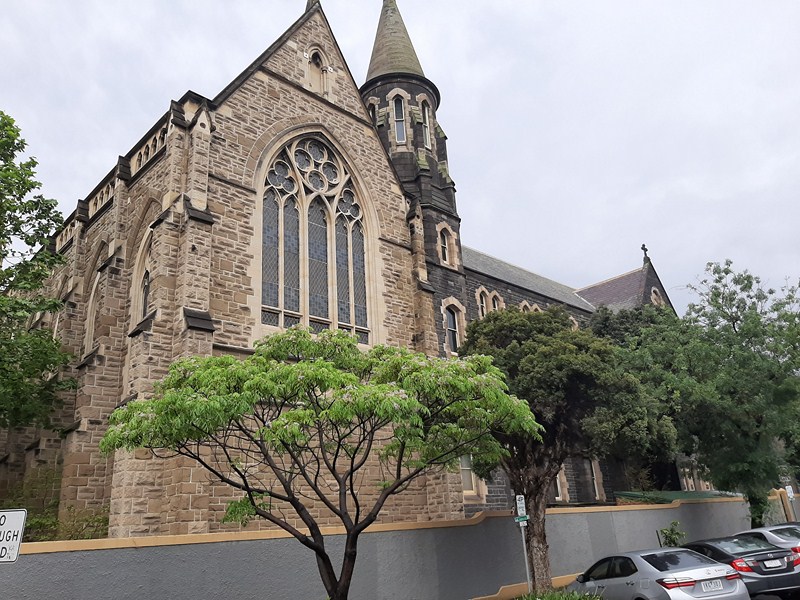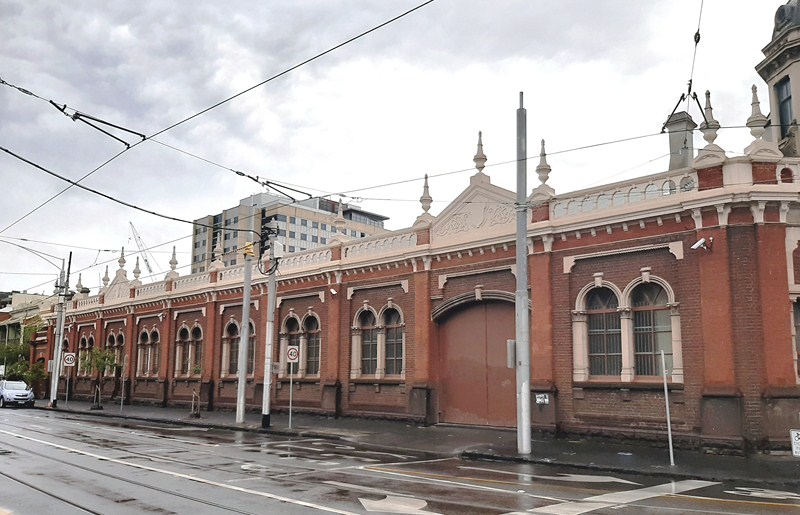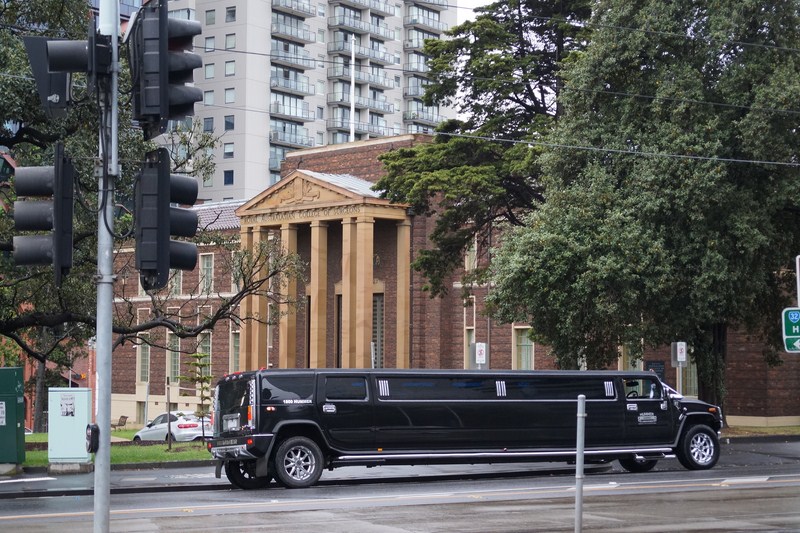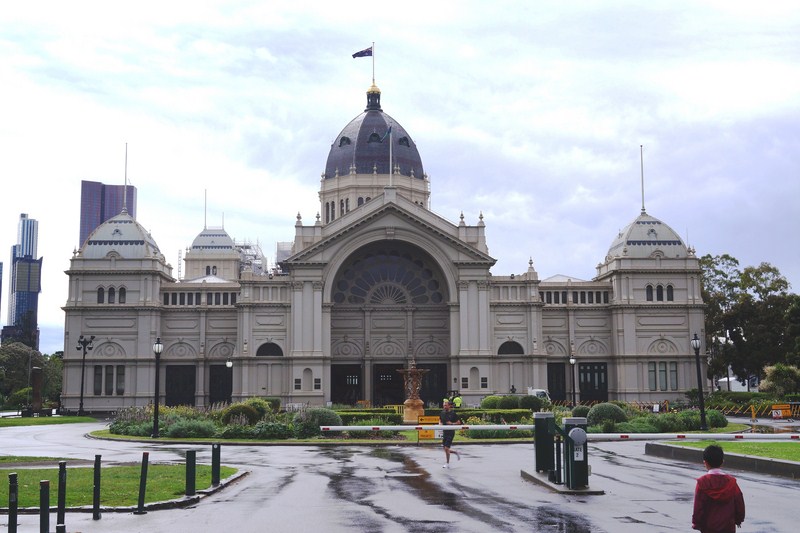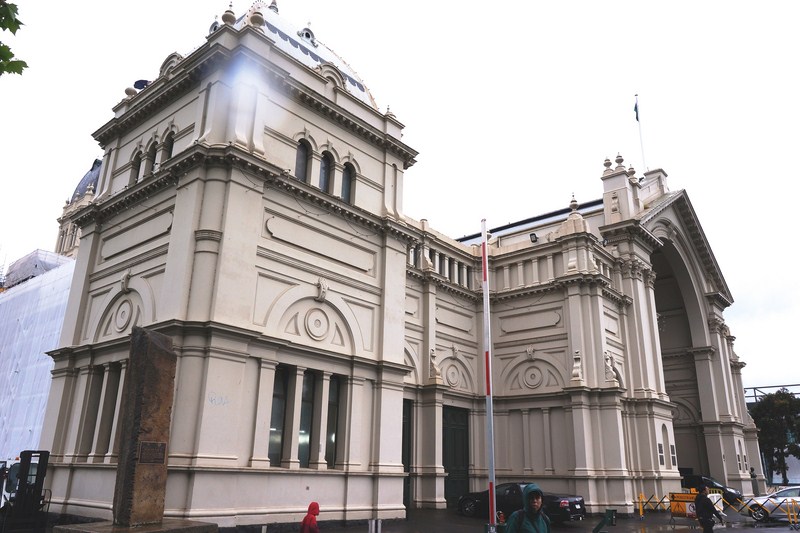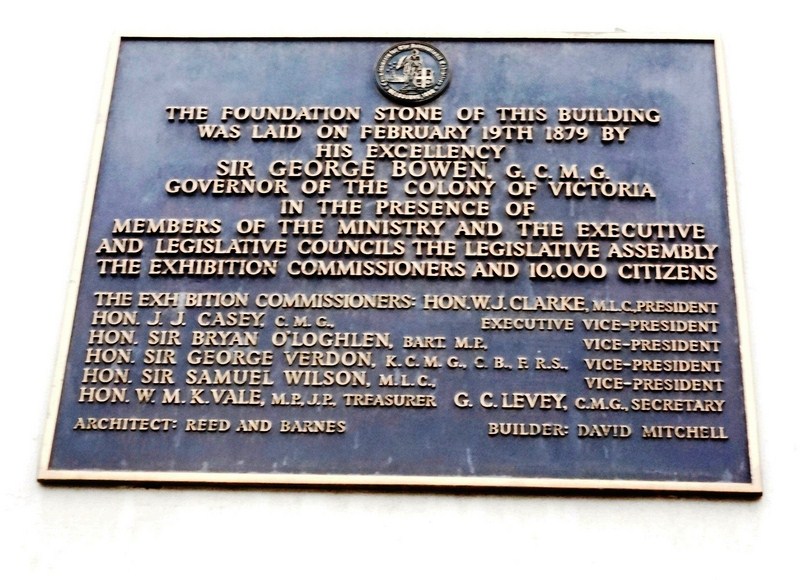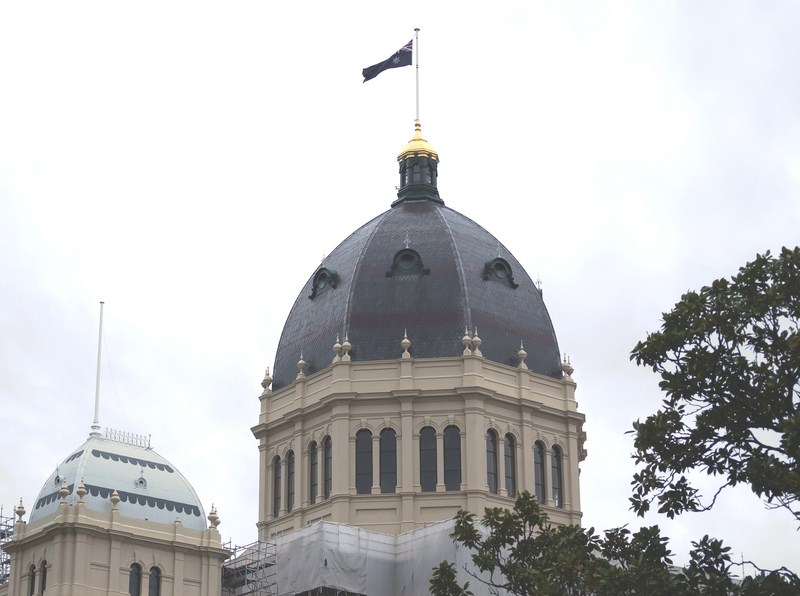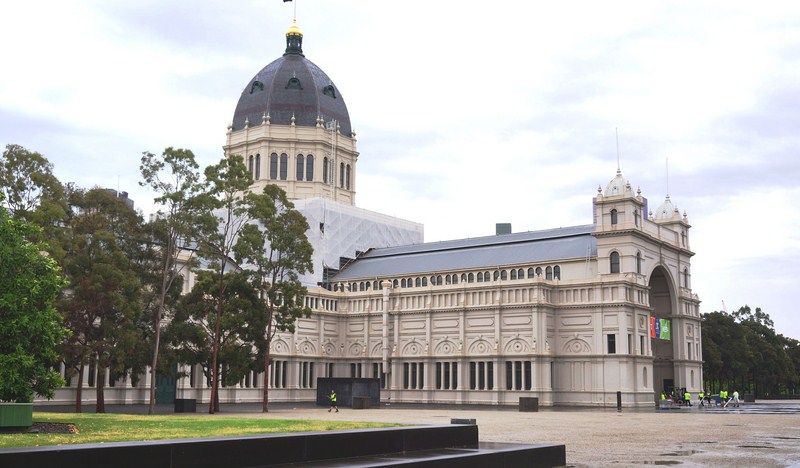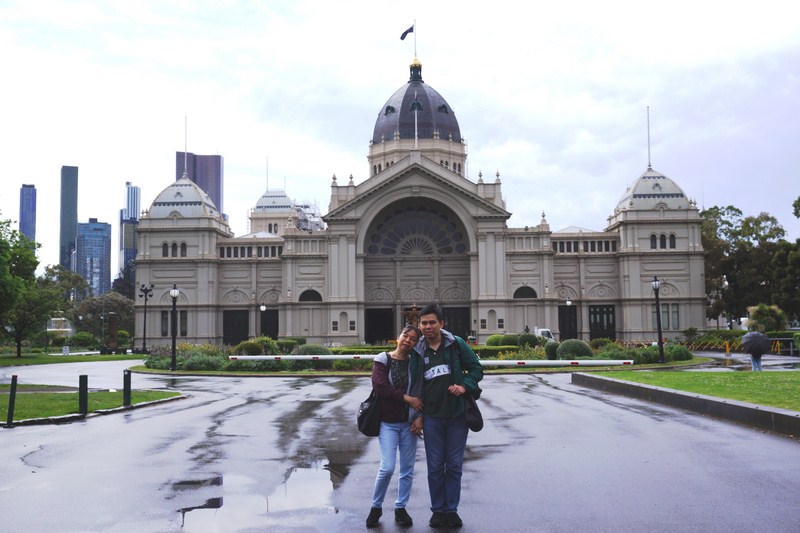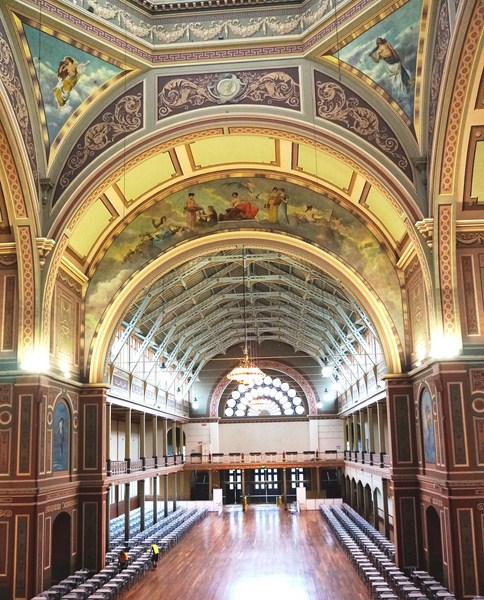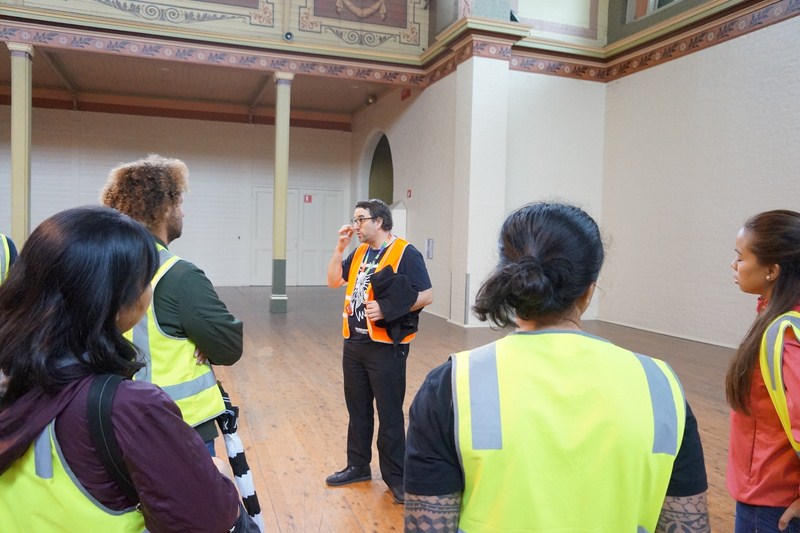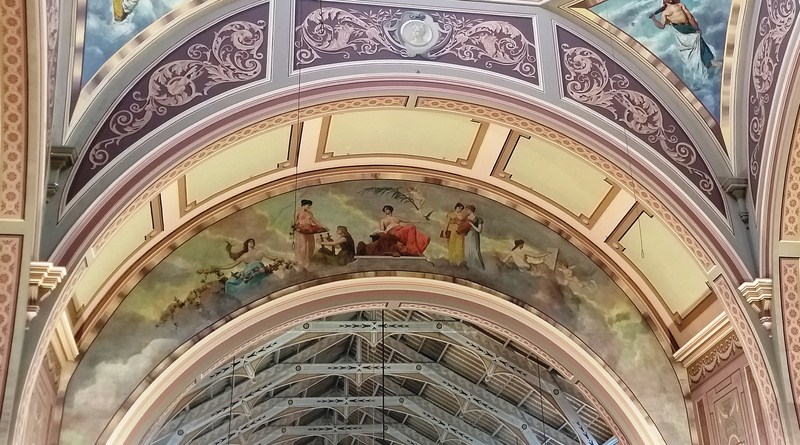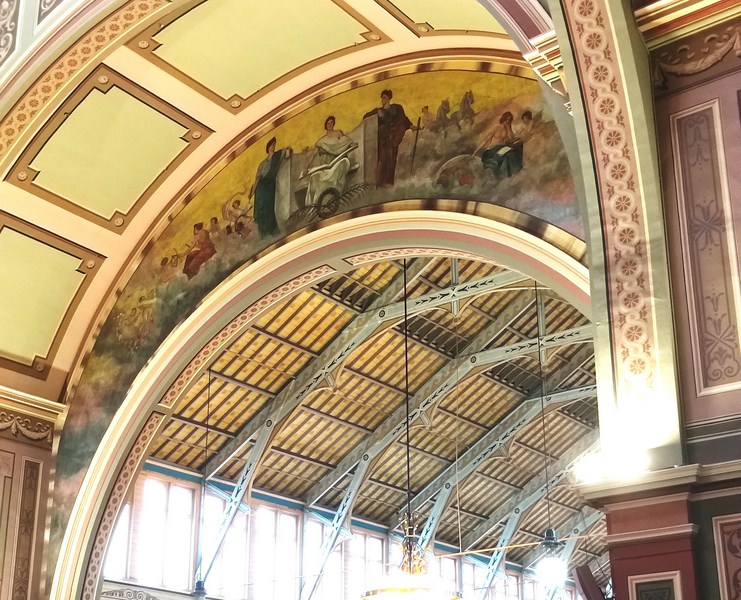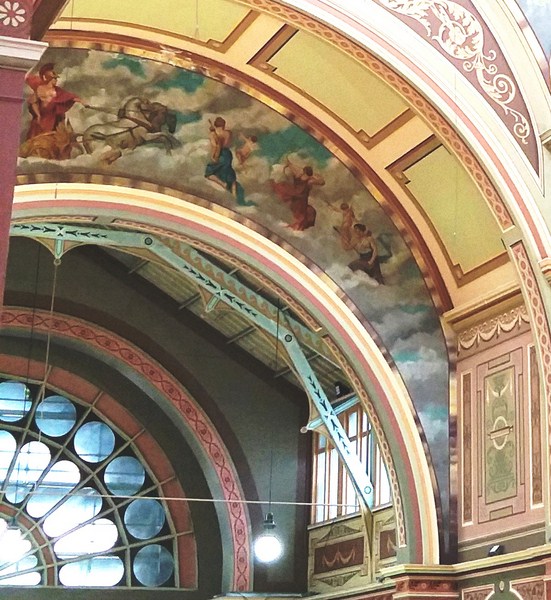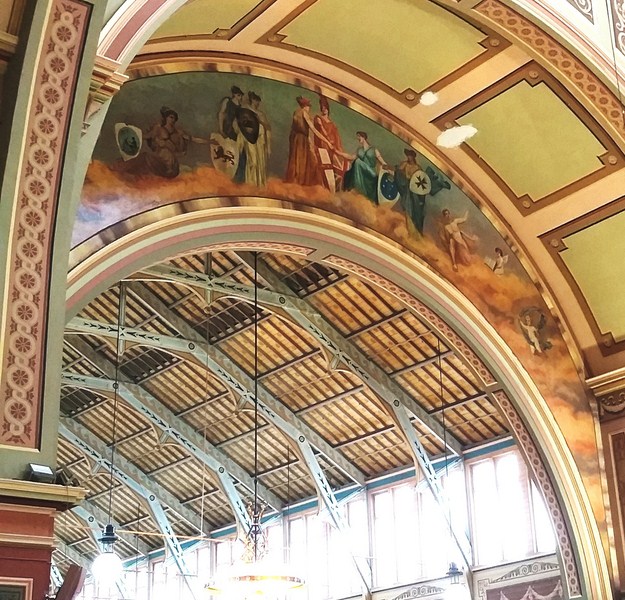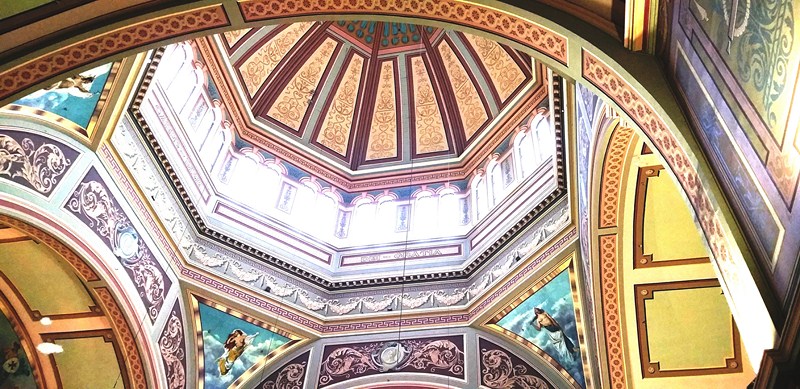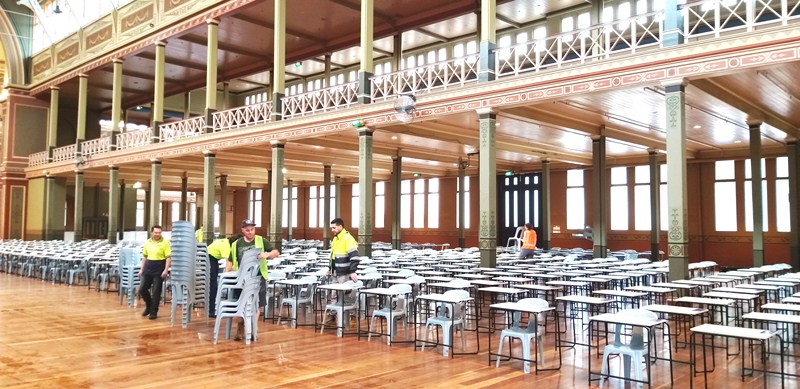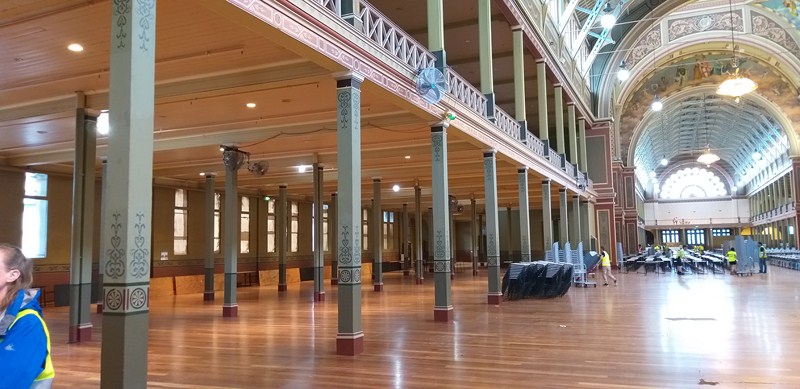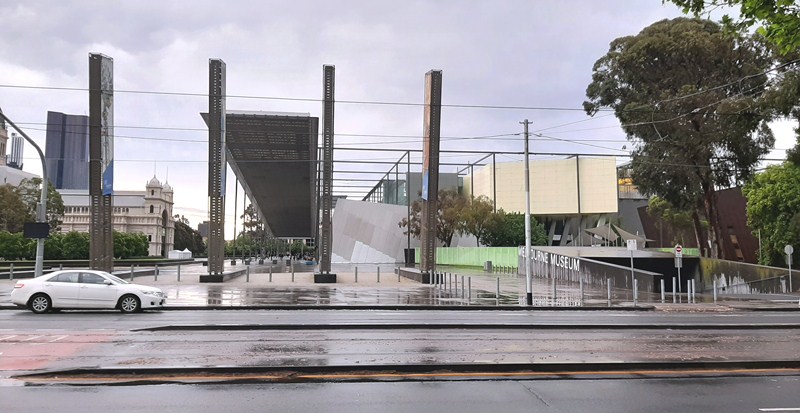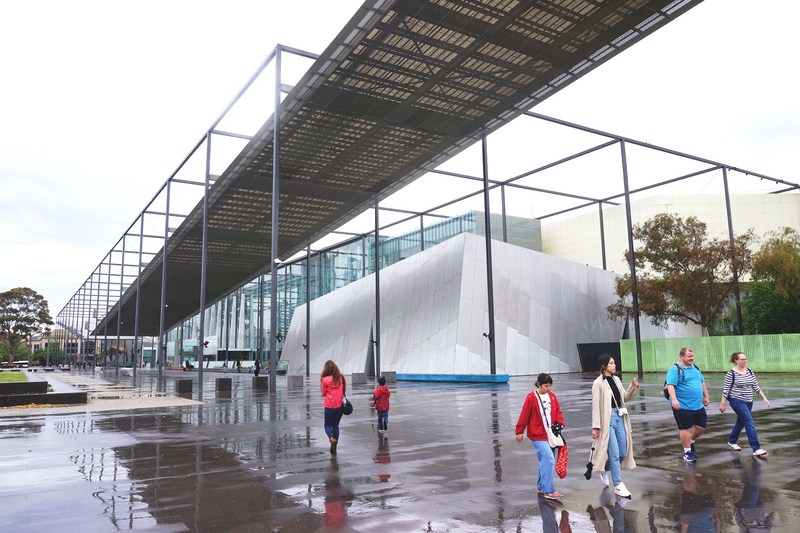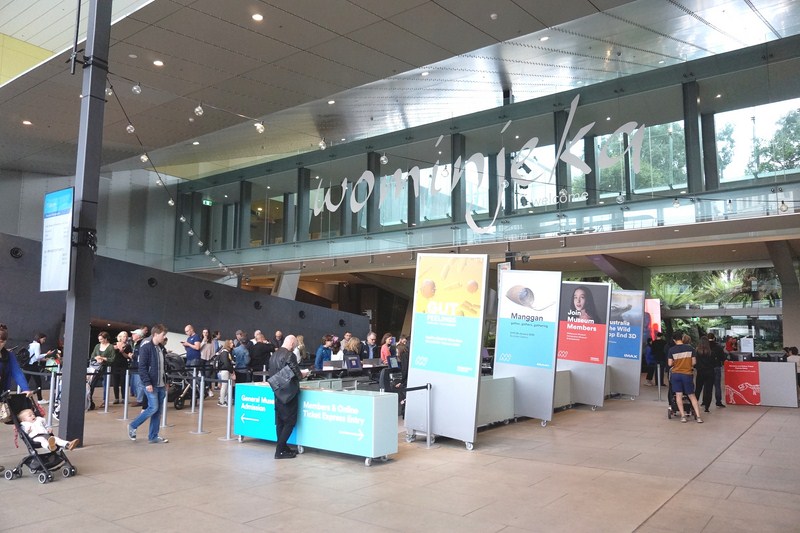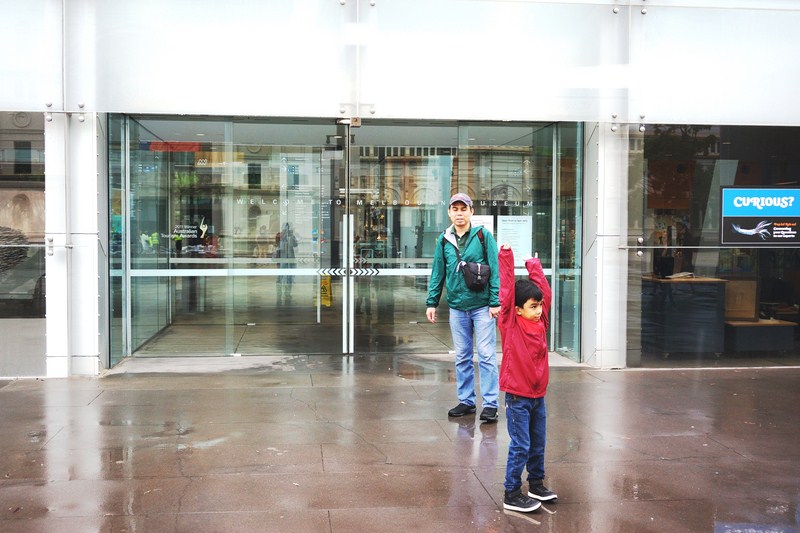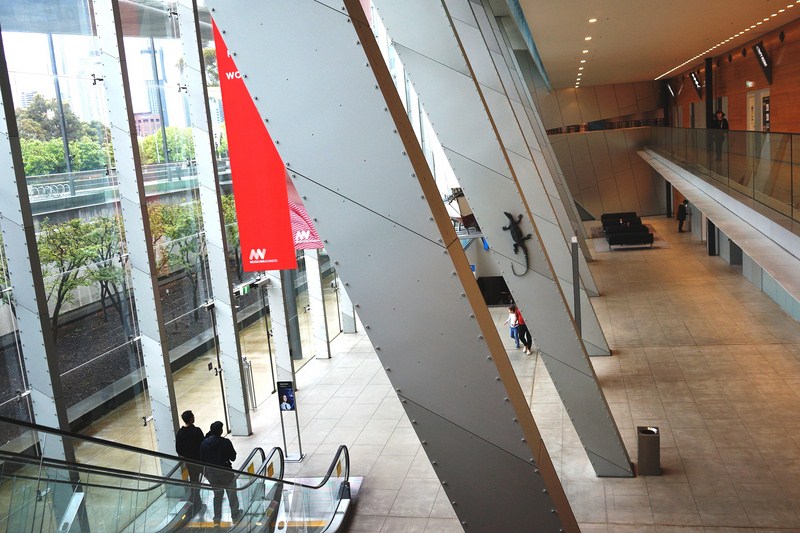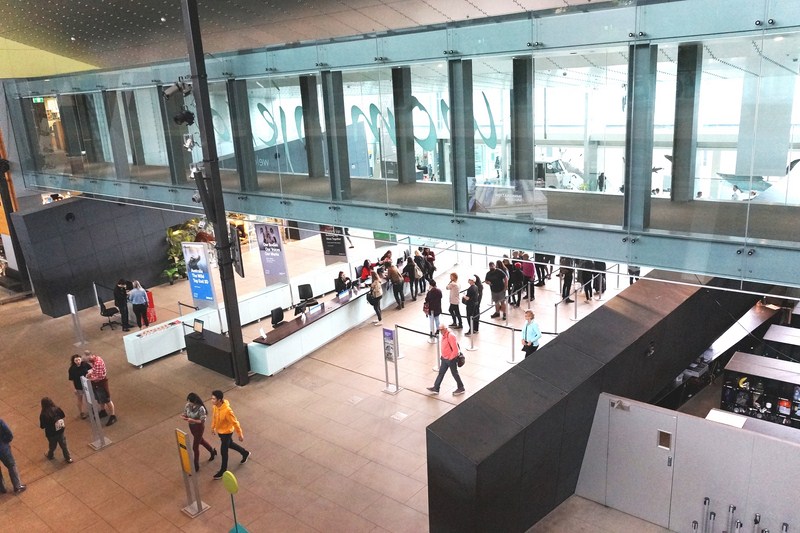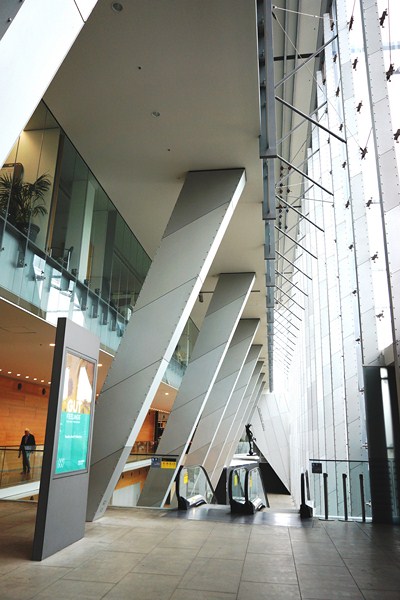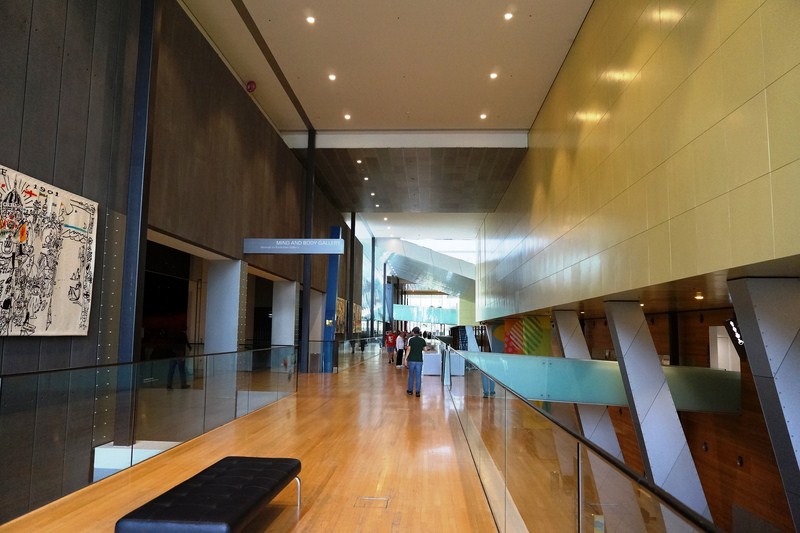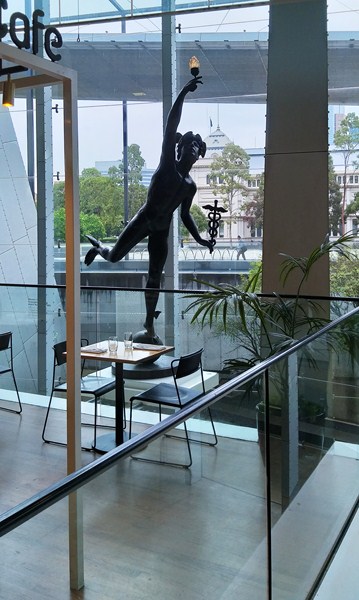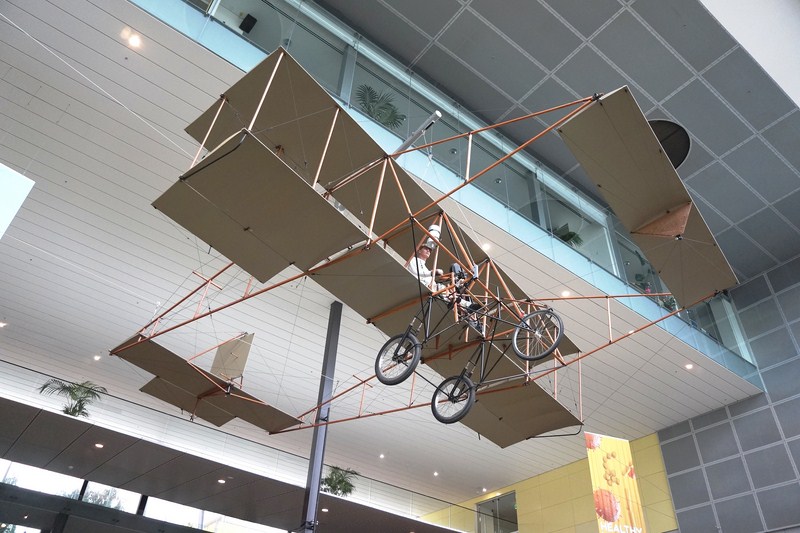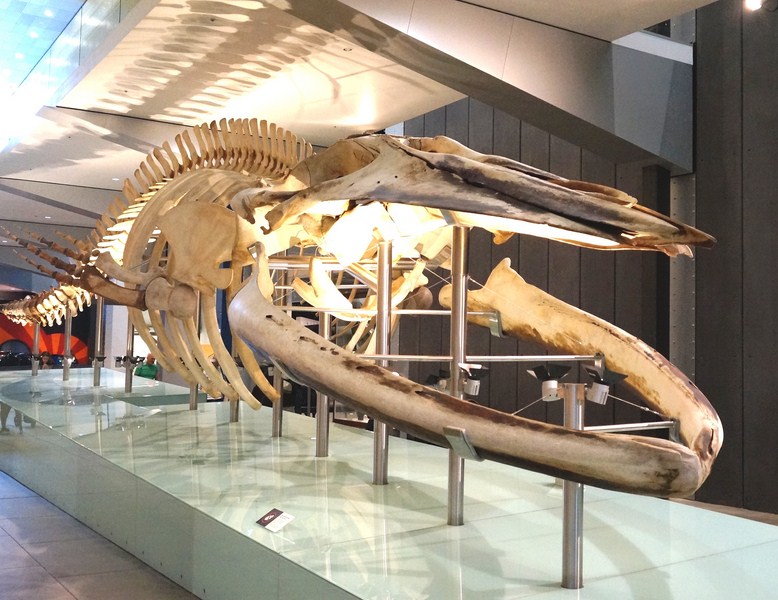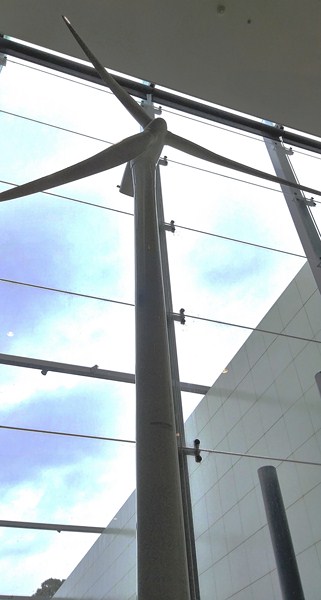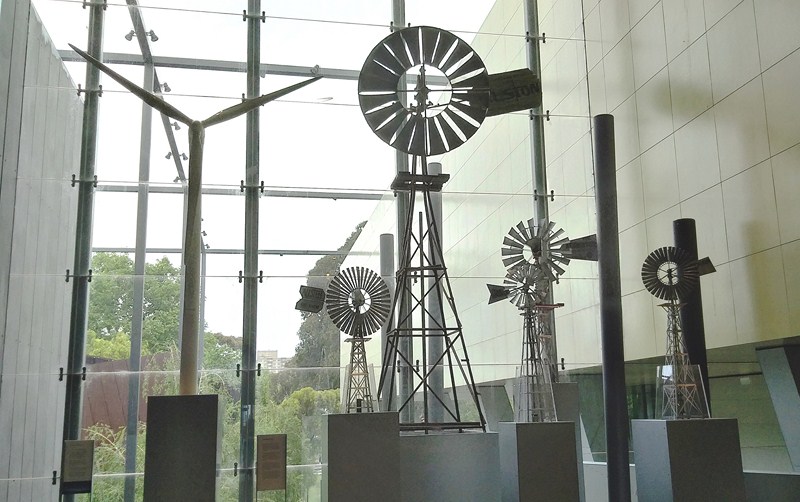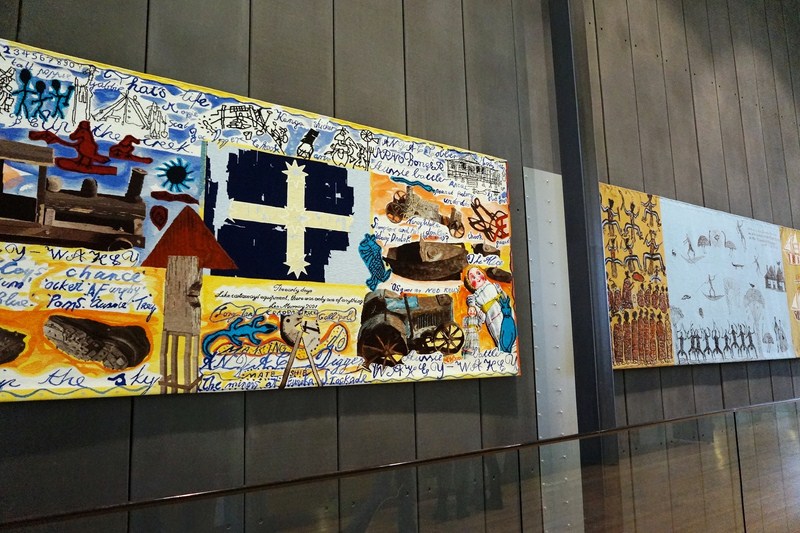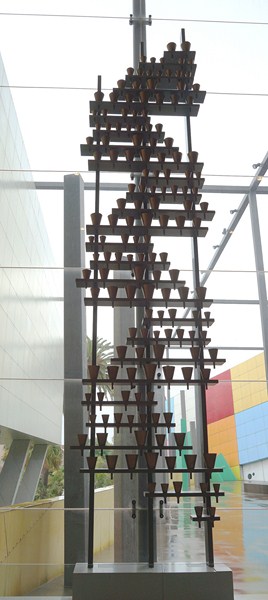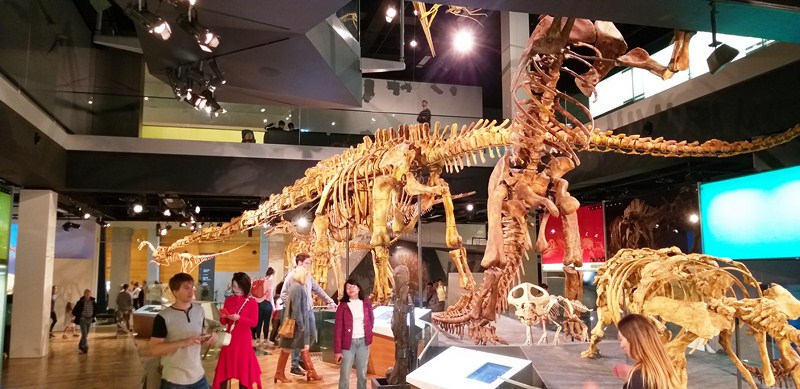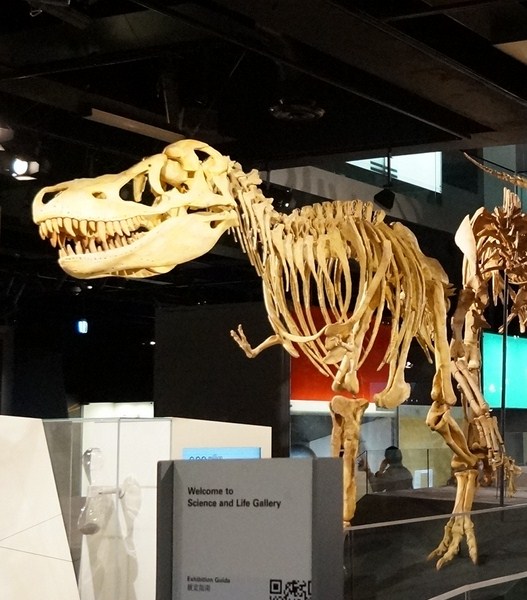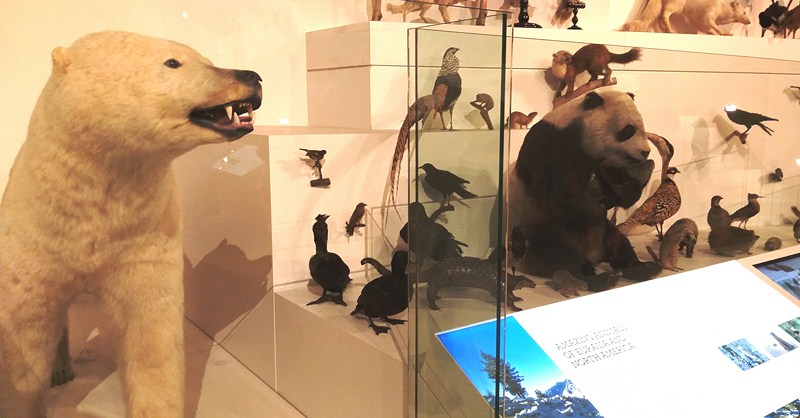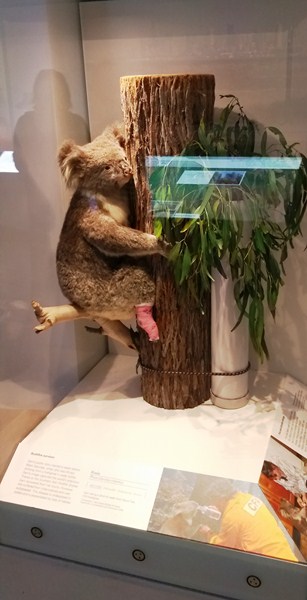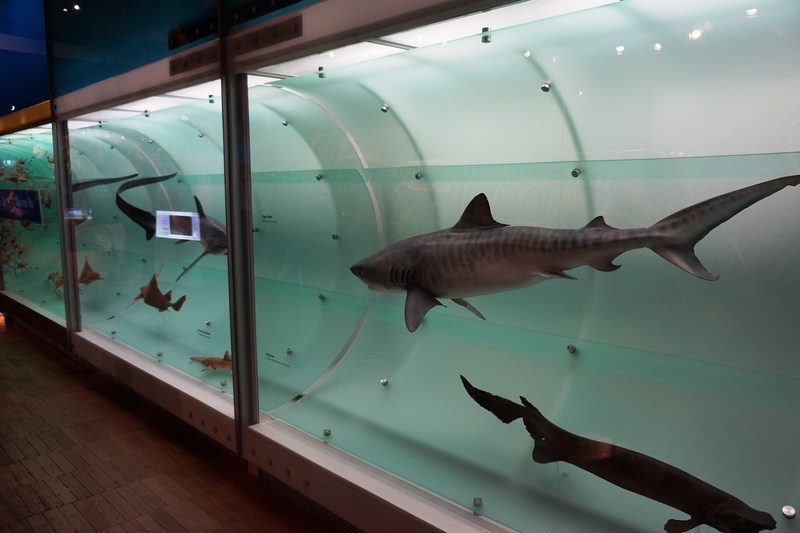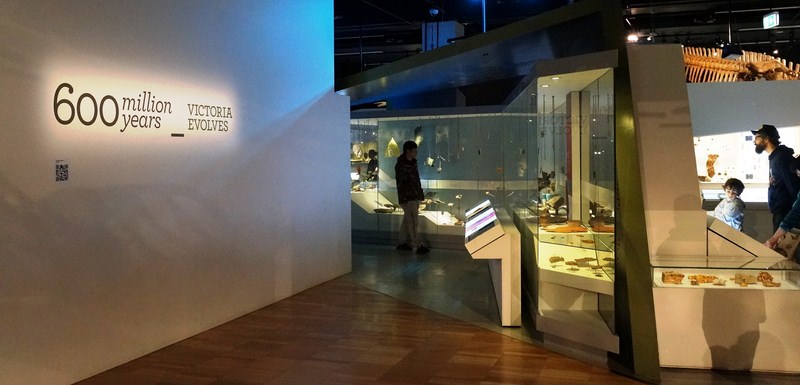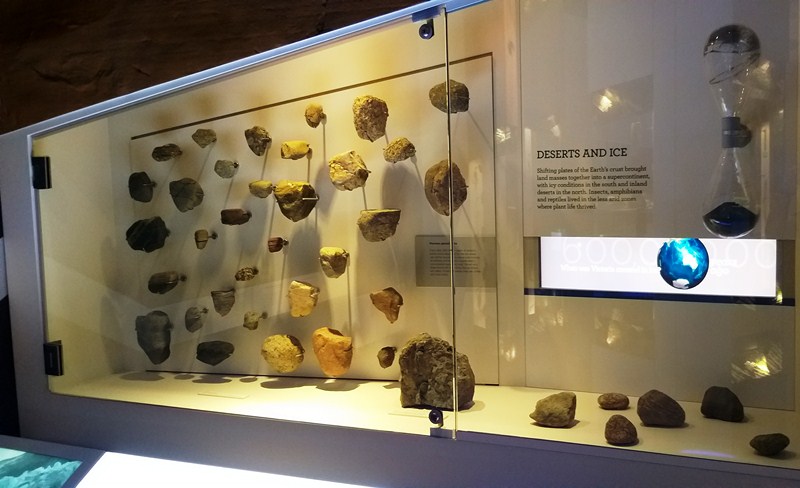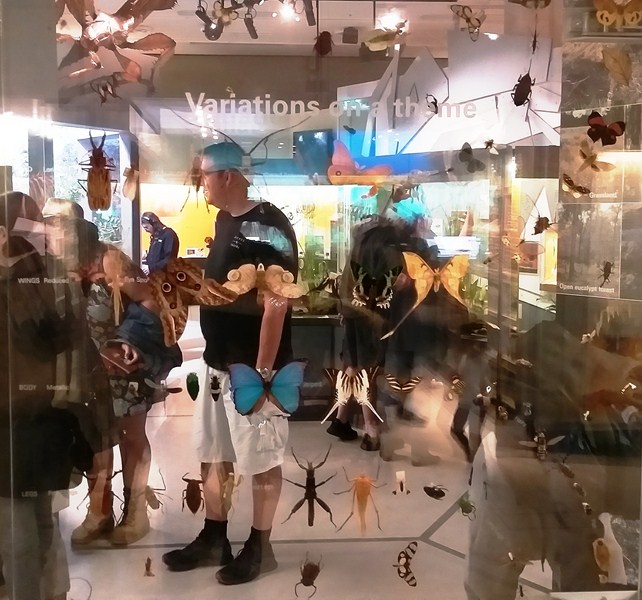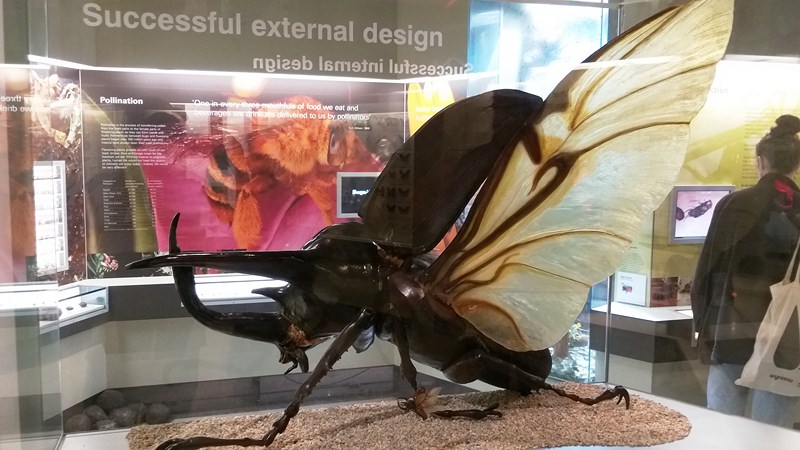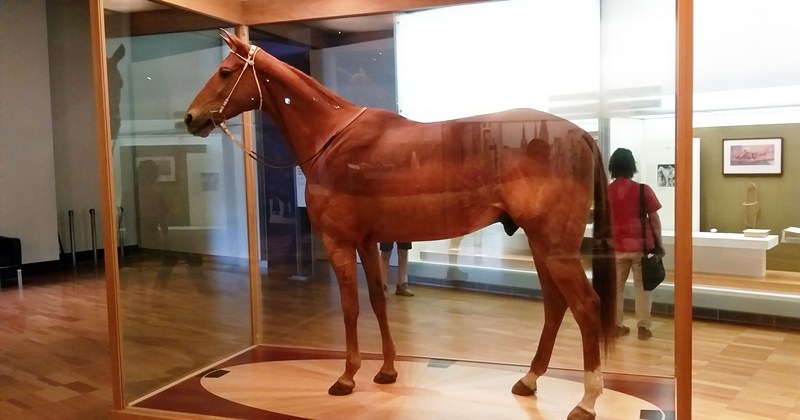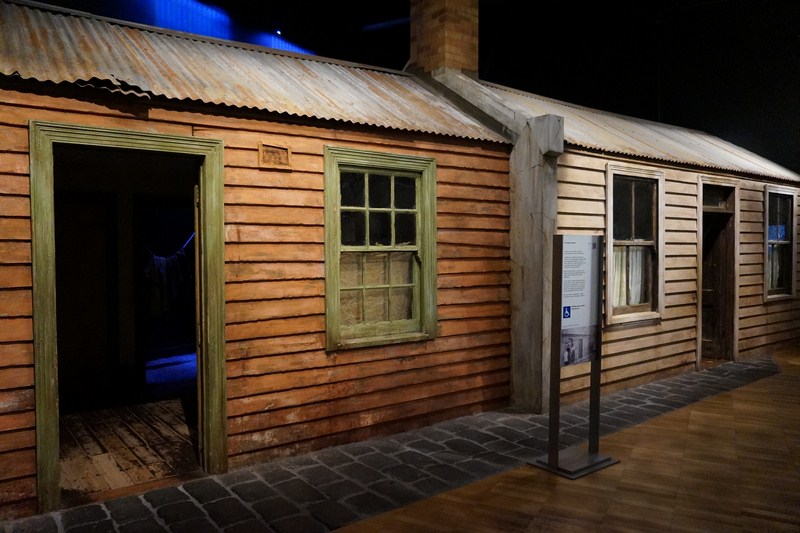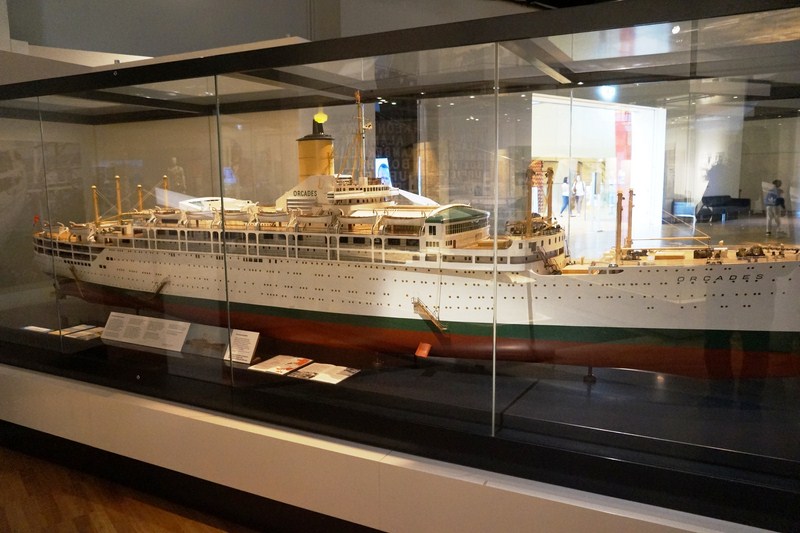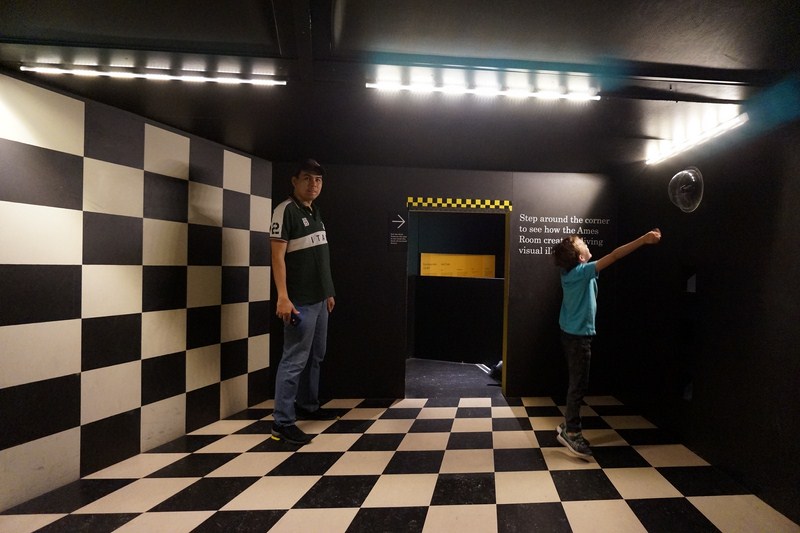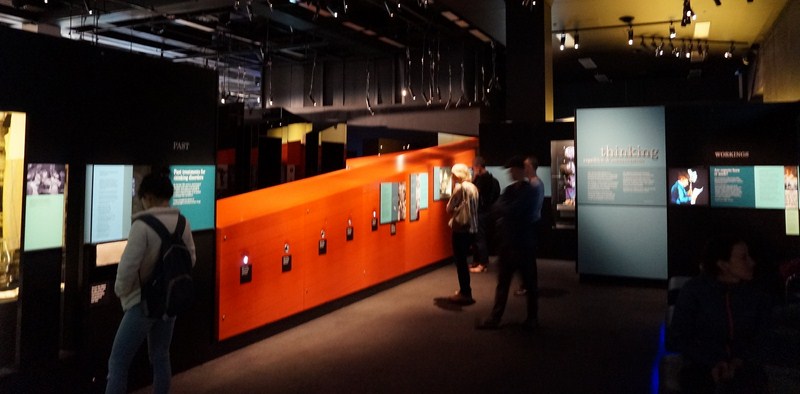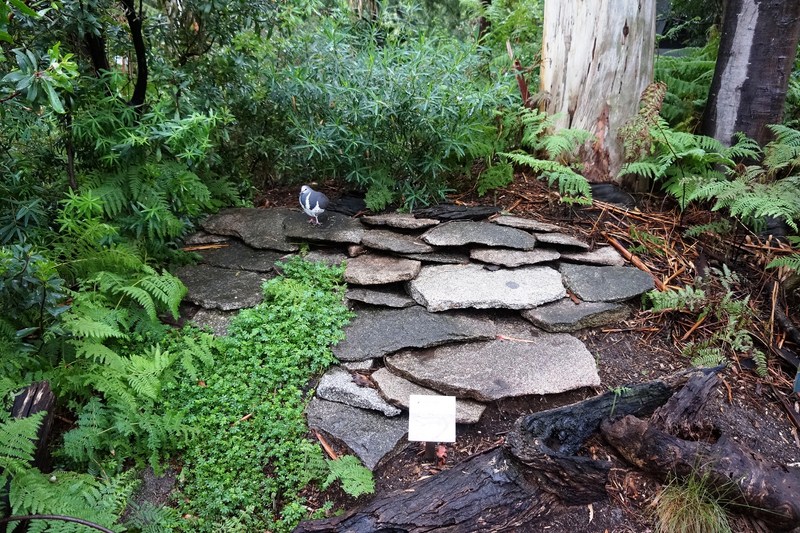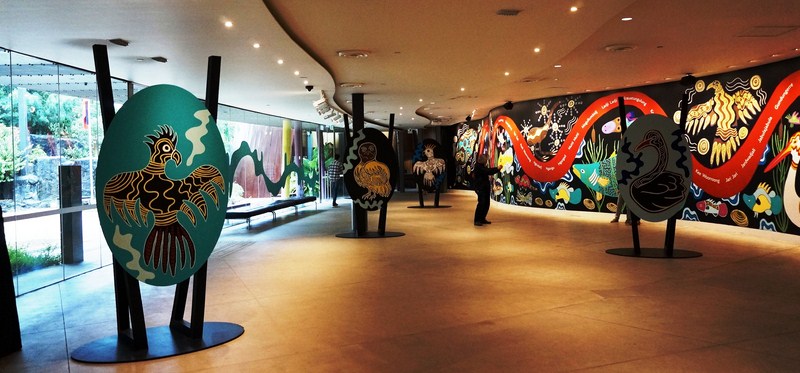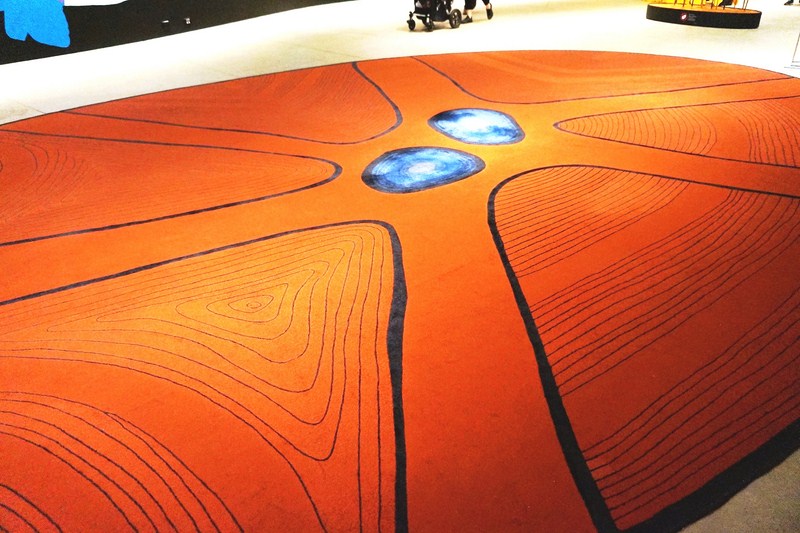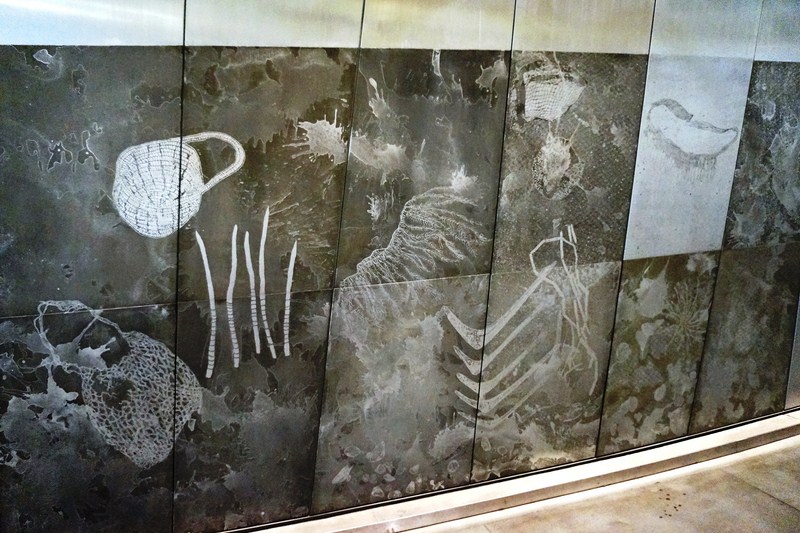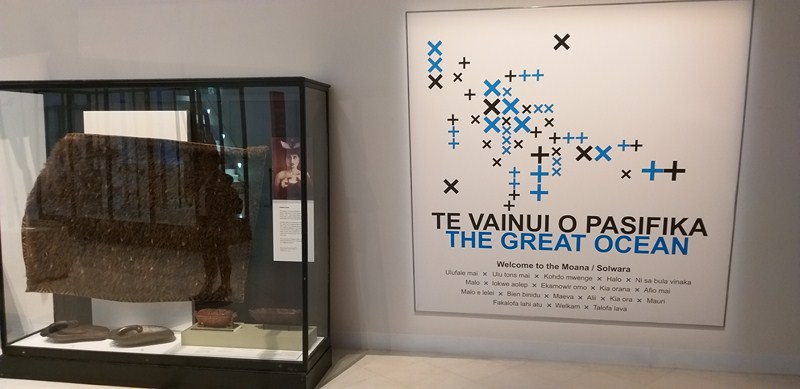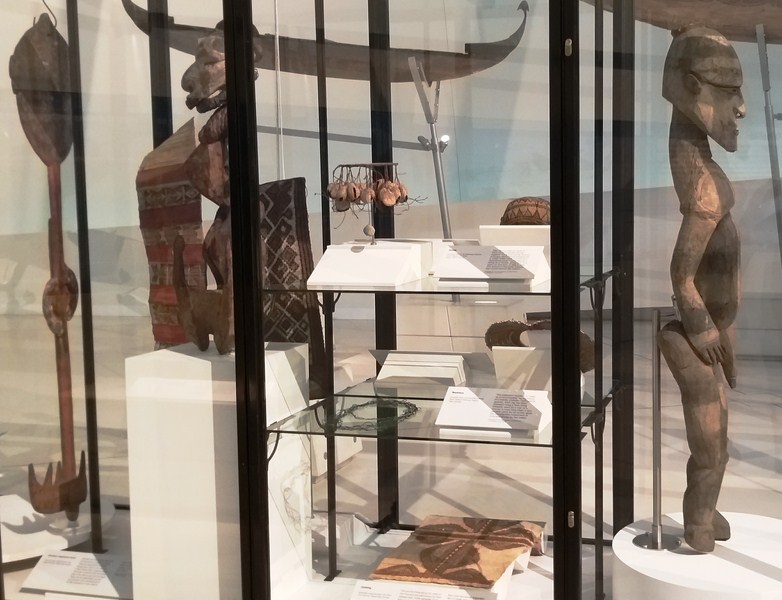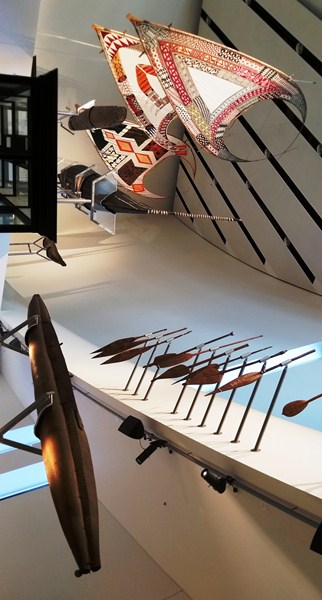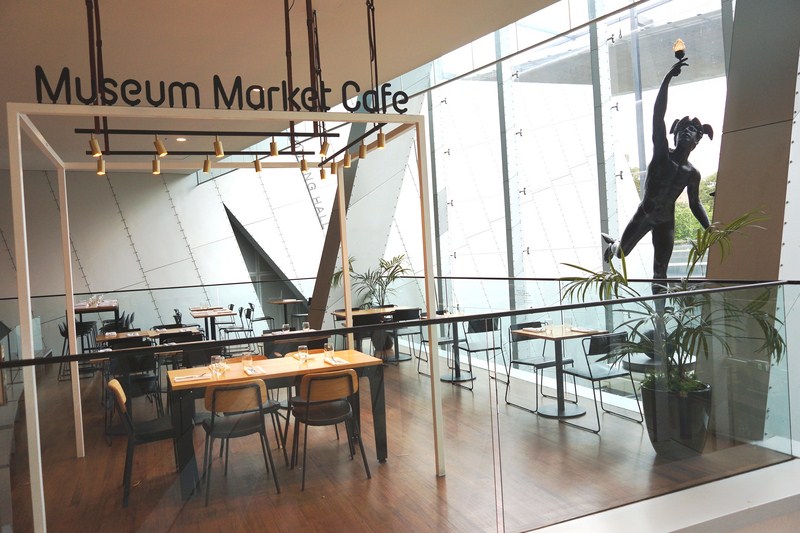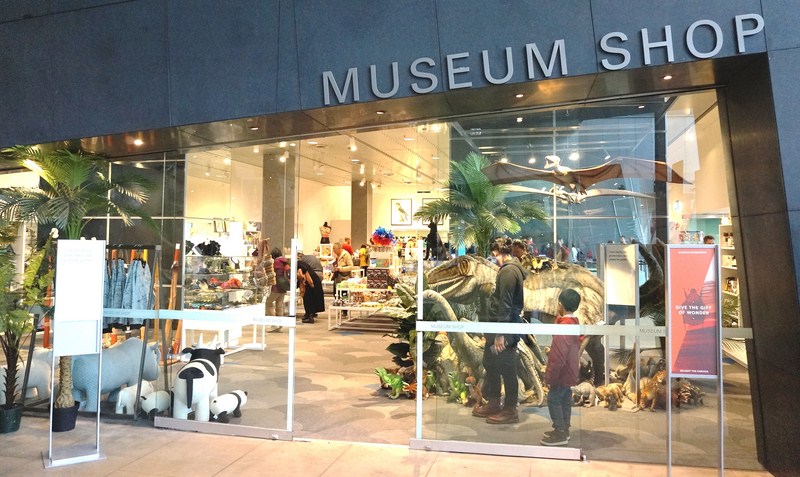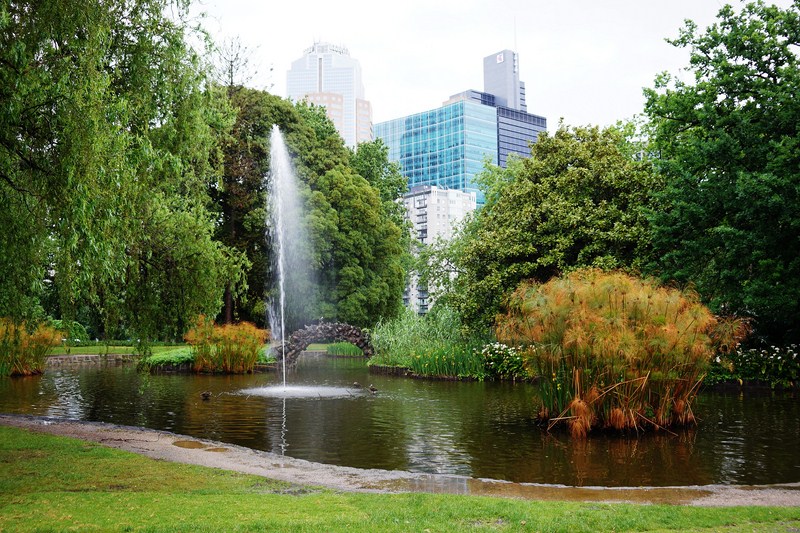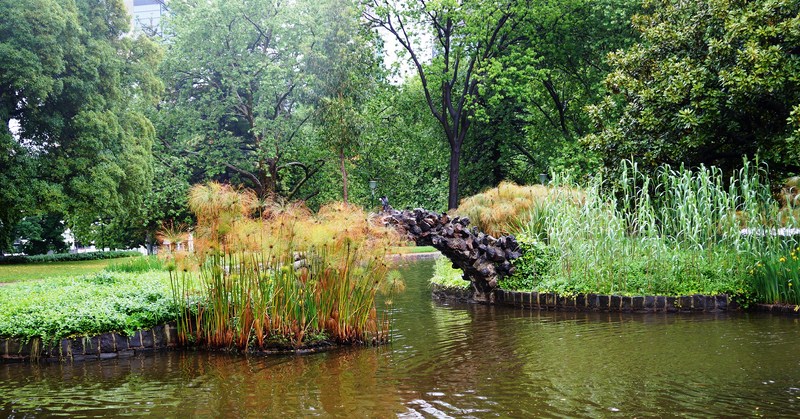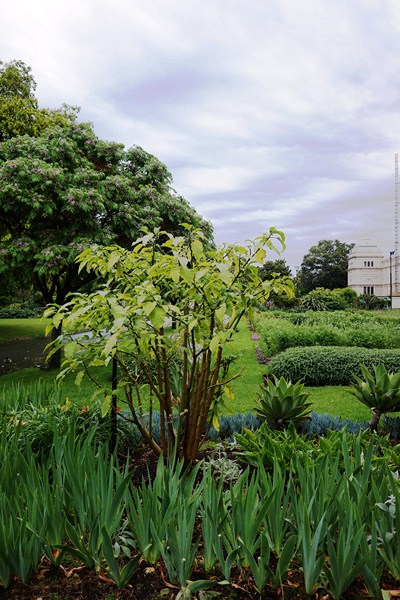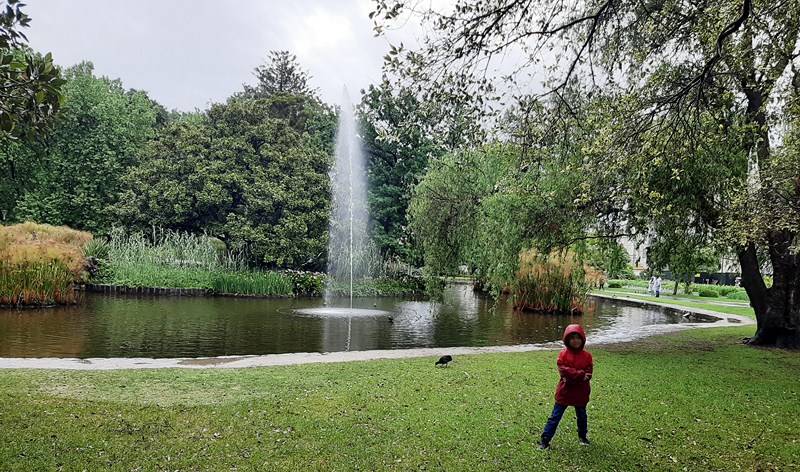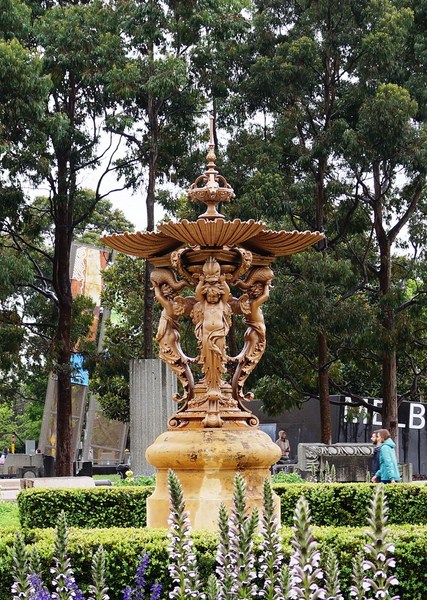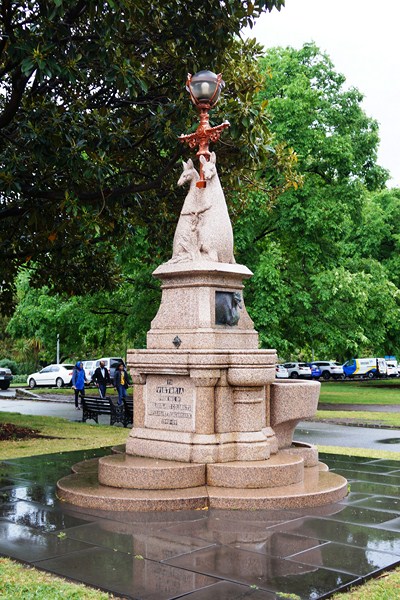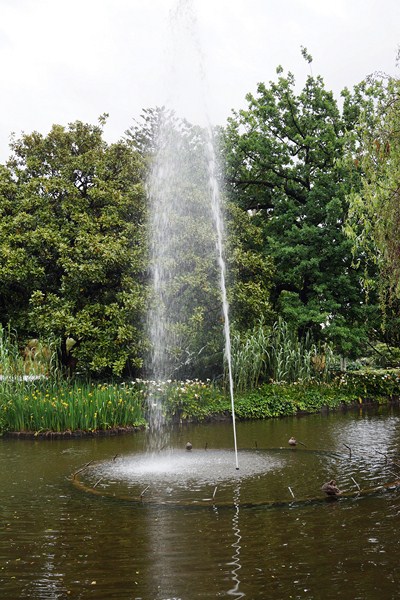After the 6 PM mass at St. Patrick’s Cathedral, we all walked to the nearby 26-hectare (64-acre) Fitzroy Garden. Located on the southeastern edge of the Melbourne Central Business District, the gardens are bounded by Clarendon Street, Albert Street, Lansdowne Street, and Wellington Parade with the Treasury Gardens, across Lansdowne Street, to the west.
Named after Sir Charles Augustus FitzRoy, a governor (1846-51) of New South Wales and Governor-General of the Australian Colonies (1851-1855), it is one of the major Victorian era landscaped gardens in Australia, adding to Melbourne‘s claim to being the garden city of Australia.
Here’s the historical timeline of the gardens:
- In 1848, the 26 hectares (64 acres) of Fitzroy Gardens were permanently reserved as public gardens, with title shared by the State Government and City of Melbourne.
- In 1856, Edward LaTrobe Bateman was commissioned to produce designs for the garden
- In 1857, James Sinclair was appointed head gardener. He worked in the gardens until his death in 1881.
- In 1858, the border of Fitzroy Square was planted with gum trees and wattles.
- In 1860, responsibility for Fitzroy Gardens was taken over by the Lands Department.
- In 1862, a path network was established and a Neo-Classical band pavilion was built near Grey Street entry. The name of the gardens was also officially changed from Fitzroy Square to Fitzroy Gardens. The path system was also firmly established.
- In 1864, the small Tudor-style gate keepers lodge was built on the southwest corner. Four fountains and statuary were also added.
- In 1865, five gas lamps were installed along main path
- In 1866, Sinclair’s Cottage was on the main walk
- In 1873, the “Temple of Winds,” a Neo-Classical rotunda, was built
- In 1880, many of the blue gum trees were removed, to create more room for existing trees as well as sweeping lawns and ornamental flowerbeds.
- In 1890, every alternate elm tree on the Avenues was removed
- In 1897, Lombardy Poplar Walk was planted in line with George Street
- In 1901, the nursery and stable yard were transferred, from the center of the gardens, to its present site
- In 1902, Pine Avenue along Grey Street walk was removed
- In 1908, the original, timber-style kiosk was opened in the center of the gardens. Development of “Mound” in center of gardens was also planted with rhododendrons.
- In 1915, the external picket fence was replaced by stone edging
- In 1917, control of gardens passed onto the City of Melbourne
- In the 1920s, a dining room was added to the kiosk
- In 1921, work was started on pollarding the Elm Avenue.
- In 1922, large number of stone pines along Clarendon and Albert Streets were removed.
- In 1923, advanced specimens of Moreton Bay figs along Wellington Parade were removed
- In 1927, the plant managers’ house was built
- On March 13, 1930, the conservatory for displaying glass-house plants was opened
- In 1934, Cooks’ Cottage was erected after being bought, shipped to Australia and donated by the Grimwade family.
- In May 1934, artist Ola Cohn completes carving the Fairies Tree and donates it to the children of Melbourne.
- In 1960, the kiosk was damaged by fire and later demolished
- In the 1960s, the central section of the creek was piped underground
- In 1964, the new brick kiosk was opened
- In the 1970s, the eighteenth century cottage garden was added to Cooks’ Cottage
- In 2014, an area previously used for depot activities was reclaimed as garden space.
The land on which the garden was built was originally swampy, with a creek draining into the Yarra River. The garden, initially designed by Clement Hodgkinson, was planted by James Sinclair, the park gardener, as a dense woodland with meandering avenues.
The creek, used for the irrigation of the western side of the gardens for fifty years, was landscaped with ferns and 130 willows but this did not stop it from smelling foul from the sewage from the houses of East Melbourne.
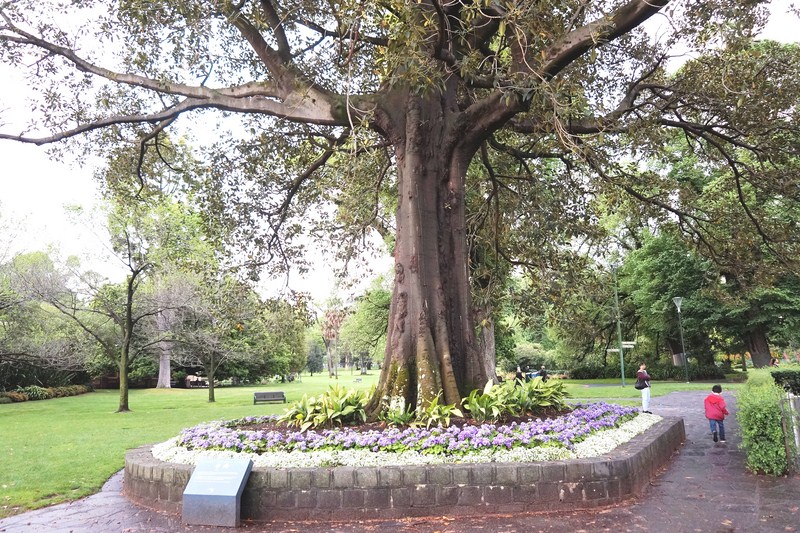
Moreton Bay Fig (Ficus macrophylla) is a large, massive and heavily branched spreading tree native to Queensland and New South Wales. This fast growing shade tree, 15-20 m. high, has large leaves and oval, glossy fruit.
In the early 1900s, the creek water substantially improved with the installation of sewerage mains to the residences of East Melbourne.
In the early years, to provide wind breaks, quick growing blue gums and wattles were planted while elm trees were planted to create avenues along pathways which, unknowingly, created a pattern resembling the Union Flag. With the creation of new planting in areas like the Mound and the Grey Street Walk, sub tropical planting became a feature of the gardens.

The Dolphin Fountain, installed at the northern end of the lake, adjacent to the Mound, was sculpted by June Arnold and consists of a pyramid of granite boulders upon which are mounted assorted sea creatures – dolphins, octopus, crabs, sea birds, sea horses, starfish, turtles and shrimps. Wealthy benefactors Dinah and Henry Krongold donated $30,000 towards the construction of the fountain and the architectural consultants were Perrott, Lyon and Mathieson.
The trees that line many of the pathways are the most notable feature of the gardens. The gardens, home to rainbow lorikeets, ducks, brushtail and ringtail possums, and microbats (small insect eating bats), are visited at night by grey-headed flying foxes (a large nectar and fruit eating bat) and powerful owls. The presence of these Australian wildlife makes the city gardens especially enjoyable for overseas visitors and locals alike.
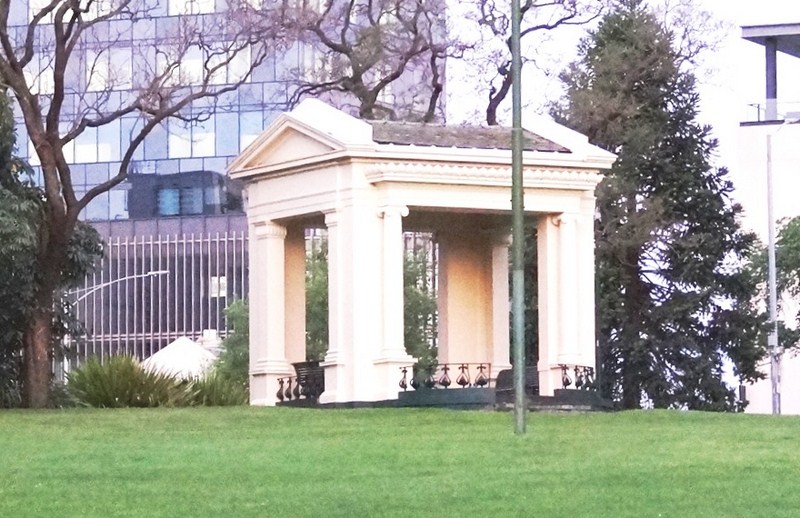
The old, square, Corinthian-style Bandstand, built adjacent to the Gipps Street entrance to the Gardens, is enclosed by a low iron fence. It was designed and erected by George Dodd in 1864 at a cost of 322 pounds.
Set within the garden are a visitor information center and cafe, a conservatory, Cooks’ Cottage, a model Tudor village, an ornamental lake, a scarred tree, tree-lined avenues, a band pavilion, a rotunda, the ” Ola Cohn’s Fairies’ Tree,” fountains and sculptures.
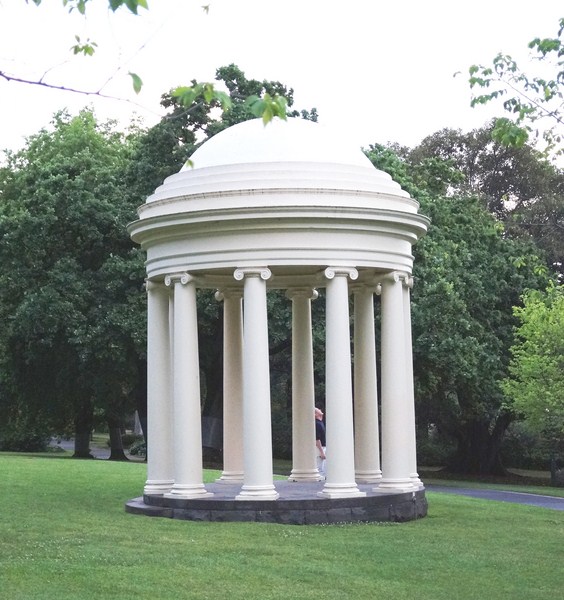
The “Temple of Winds,” a Neo-Classical rotunda, was built in 1873 by Thomas Julian and Co. at a cost of £275. The building consists of a domed concrete roof supported by ten Corinthian columns.
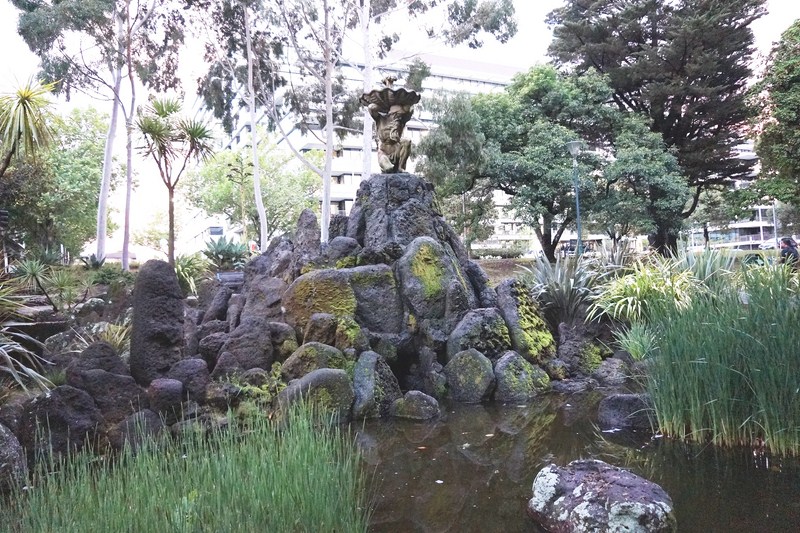
The River God Fountain, located at the north end of the gardens at the junction of paths facing south, was designed and cast in concrete by the sculptor, Charles Summers and was erected in the Fitzroy Gardens in 1862. Its central feature is a figure of a man on bended knee bearing an open clam shell on his shoulders.
The Ola Cohn’s Fairies’ Tree comprises a series of lovely carvings (fairies, dwarfs, gnomes, a marvelous jackass, koalas, flying foxes and a host of typical Australian animals and birds), done from 1931 to May 1934 (Victoria’s Centenary Year) by Miss Ola Cohn, on the stump of one of the original old red gum trees.
The trunk was extracted from the ground, in 1977, for chemical treatment and the removal of rotted wood. During the process, the mummified remains of an over 40 year old brush tail possum was found, perfectly preserved within the trunk. To prolong its life, the tree was remounted on a concrete base.
The Conservatory, one of Melbourne’s favorite tourist attractions, was opened on March 13, 1930 and provides 5 separate, spectacular floral displays each year.
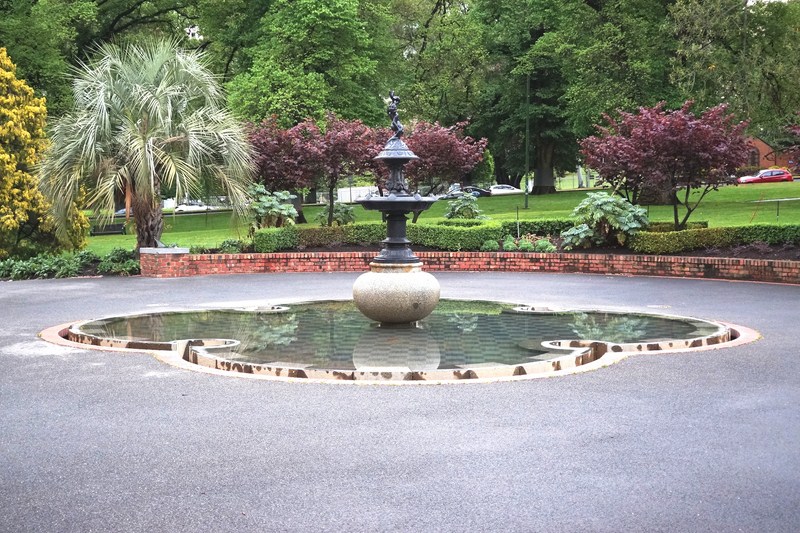
The Conservatory Fountain (Boy with Serpent), a cast-iron ornamental fountain located near the rear entrance, features a snake coiled around the figure of a boy, atop a granite shaped ball.
Hydrangea and Fuchsias are in Display 1 (November – February); Tuberous Begonia and Gloxinia in Display 2 (February – April); Tropical and Poinsettia in Display 3 (April – July); Cineraria and Cyclamen in Display 4 (July – September); and Schizanthus and Calceolaria in Display 5 (September – November).
Built in the Spanish Mission architectural style, it measures 30 x 15 m. and originally cost 4,000 pounds.
Cooks’ Cottage, which originally stood on an extremity of the village of Great Ayton, Yorkshire, England, was built, rebuilt or bought by Cook’s father in 1755. However, from the date 1755 and the initials of James and Grace (Cook’s mother and father) over the doorway, it is apparent that it is older than the rest of the cottage and it would seem that the cottage was rebuilt, and not originally built by Cook’s father when he bought it.
The Great Ayton family cottage is the only concrete historical link we have with Captain James Cook‘s origins (the original thatched cottage in which Cook was born at Marton-in-Cleveland was demolished in 1786) as it is possible that, during his boyhood years from 1736 until 1745, Captain Cook lived in the cottage. In the winter of 1771/72, on his return from the Australia voyage, he also spent some time with his father in the cottage.
In 1933, the last owner of the cottage, Mrs. Dixon put the cottage up for sale and the prominent Melbournian Russell Grimwade agreed to buy the cottage and present it as a gift to the Victorian people as an ideal focus piece for Victoria’s centenary in 1934. Grimwade dismantled and shipped the cottage to Melbourne in 253 packing cases, arriving in April 1934.
As research and guess work would permit, the cottage was accurately restored to its mid 18th century appearance and completed in six months. A site in the Fitzroy Gardens, with its large shady European trees, was selected to complement the cottage. On October 15, 1934, during a centenary ceremony, the cottage was handed over to the Lord Mayor, H. Gengoult Smith by Russell Grimwade. The cottage has undergone two restorations in the late 1950’s and the most recent in 1978.
The Village, situated in the center of the Fitzroy Gardens, was one of three such villages modeled in cement, as a hobby, by the 77 year old Mr. Edgar Wilson, a pensioner who lived in Hamilton Road, Norwood, London, England. In appreciation of Melbourne’s generosity in sending food to Britain during the World War II, one of them was presented to the City of Melbourne through the City of Lambeth, England and was officially opened, on May 21, 1948, by the Right Honorable Lord Mayor of Melbourne, Councilor Sir Raymond Connelly.
The delightful village, representing a typical Kentish village built during the “Tudor” period of English history, is composed of models of various thatched cottages, a village church, school, hotel, barns, stocks, pump, a scale model of Shakespeare’s home and Anne Hathaway’s cottage, and all public buildings.
The Italian Romanesque-style, single storey Sinclair’s cottage, a polychrome brick gardener’s cottage located on the main Elm Avenue, was designed by Melbourne architect Francis Maloney White. It was built in 1866 by Thomas Crowson at a cost of 520 pounds.
This house has a gabled entrance porch with overhanging eaves; walls of alternating cream and red brickwork (with cream as the dominant color) and two notable stripped chimneys, built in alternating red and cream brickwork courses, which dominate the roof.
The stables at the back repeat, in a much simpler fashion, the fine details of the main house.
A café and visitor center provides tourism information about Melbourne as well as specific information and services for Cooks’ Cottage and Fitzroy Gardens.
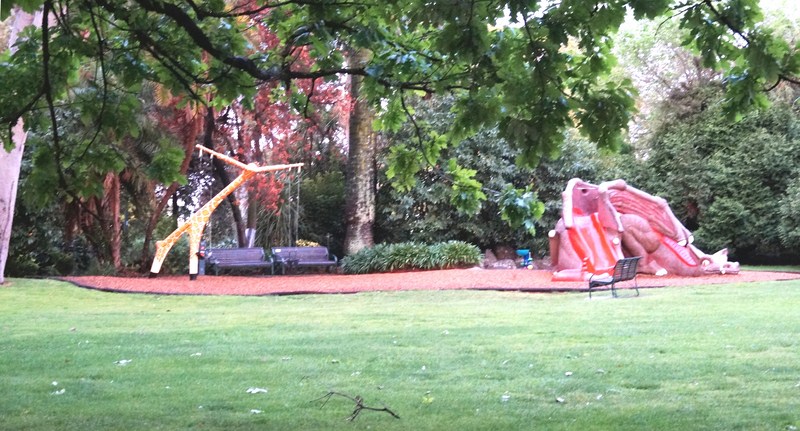
The Children’s Playground, located on the south side of the Grey Street herbaceous border, has a 20-ton sculpted concrete dragon as its centerpiece. The dragon is 7 m. long and 3 m. wide and was sculpted by Martin Moore, Gary Tippet and Aaron Beaucaire from Mothers Art. It was built using a steel frame with a reinforced concrete base.
Fitzroy Gardens: Wellington Parade, East Melbourne, Victoria, 3002, Australia Opening Hours: Open 24 hours; closed from October 28 to November 1.

